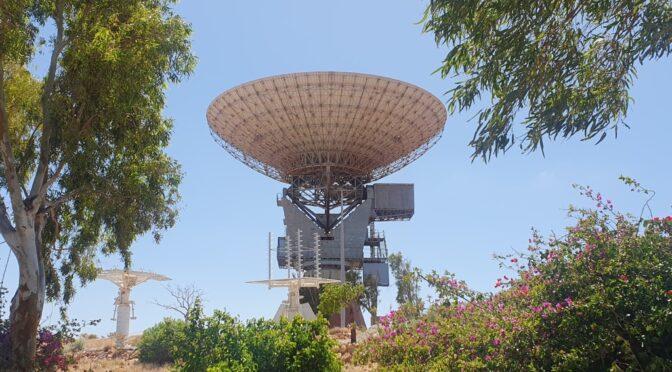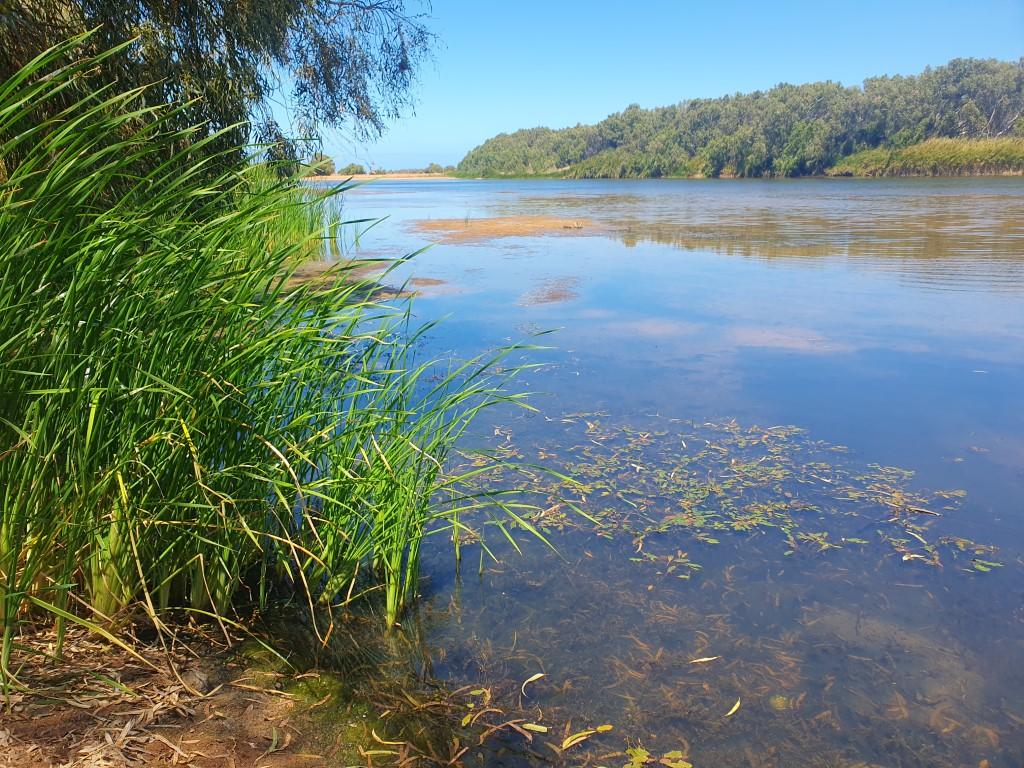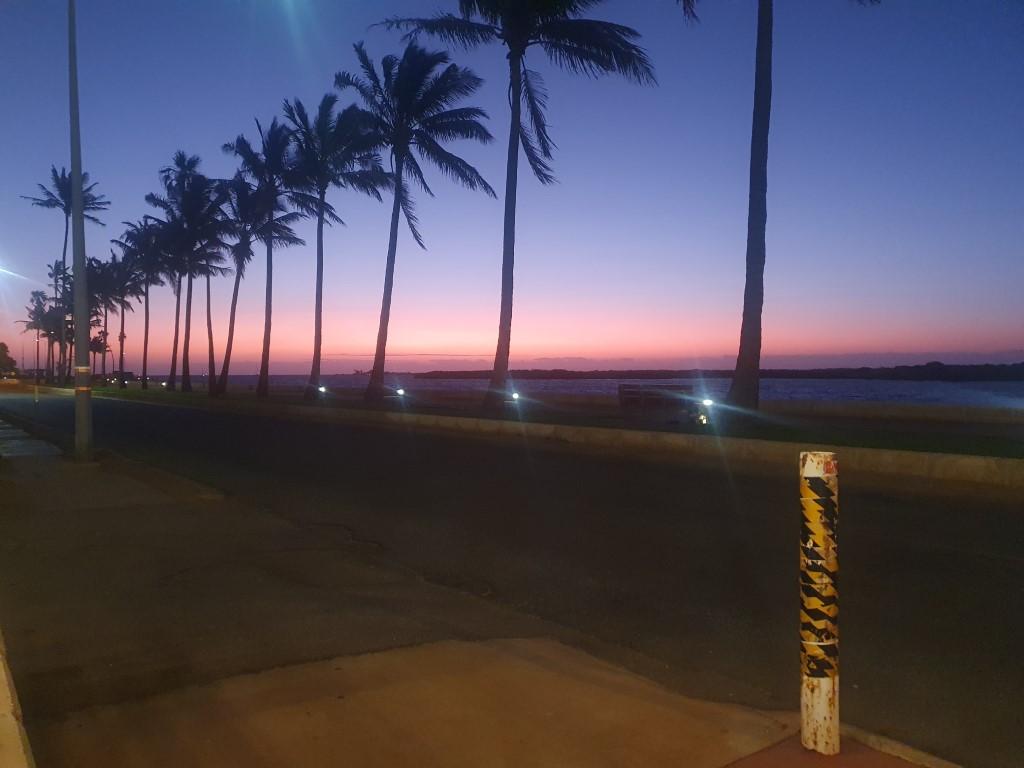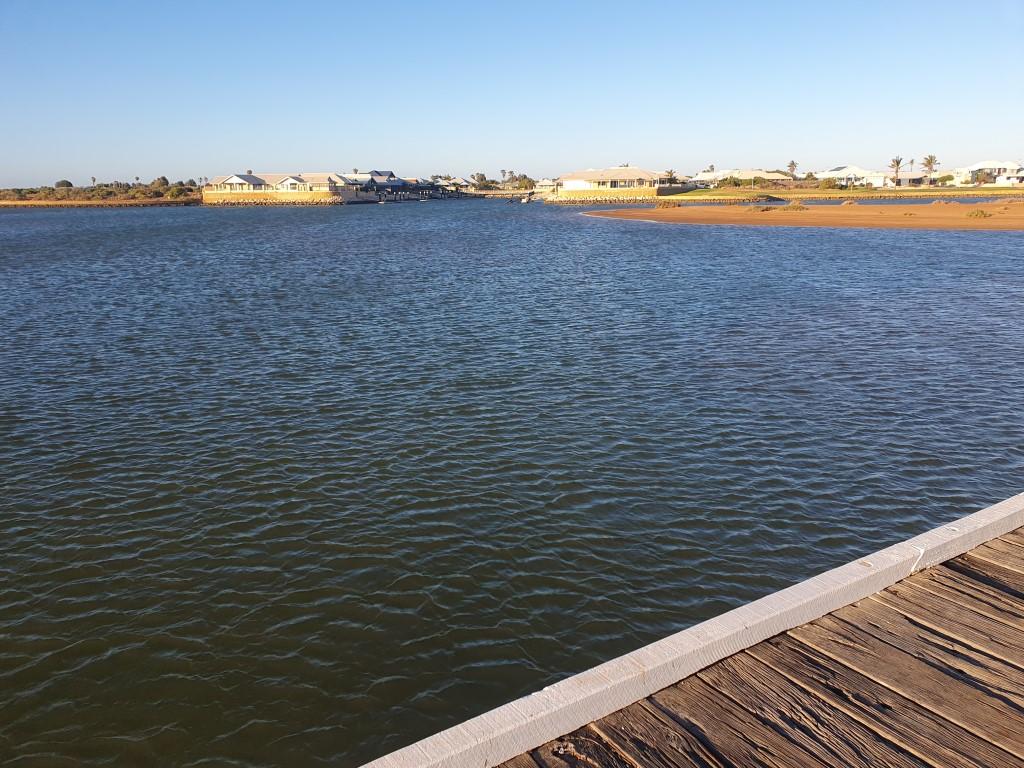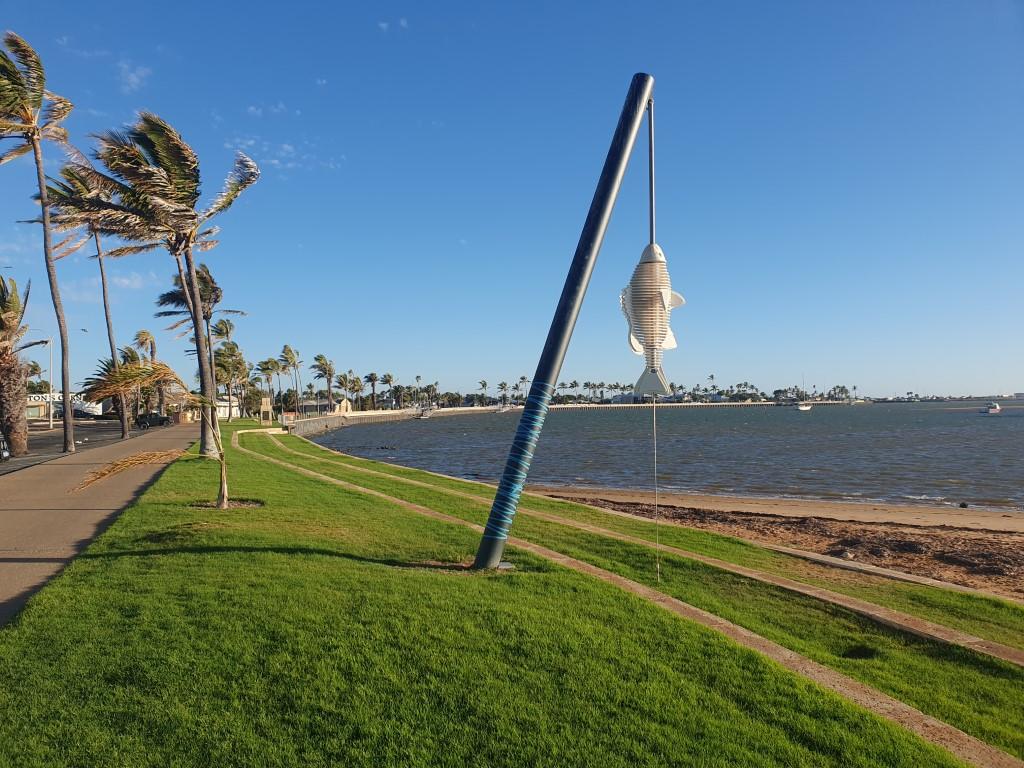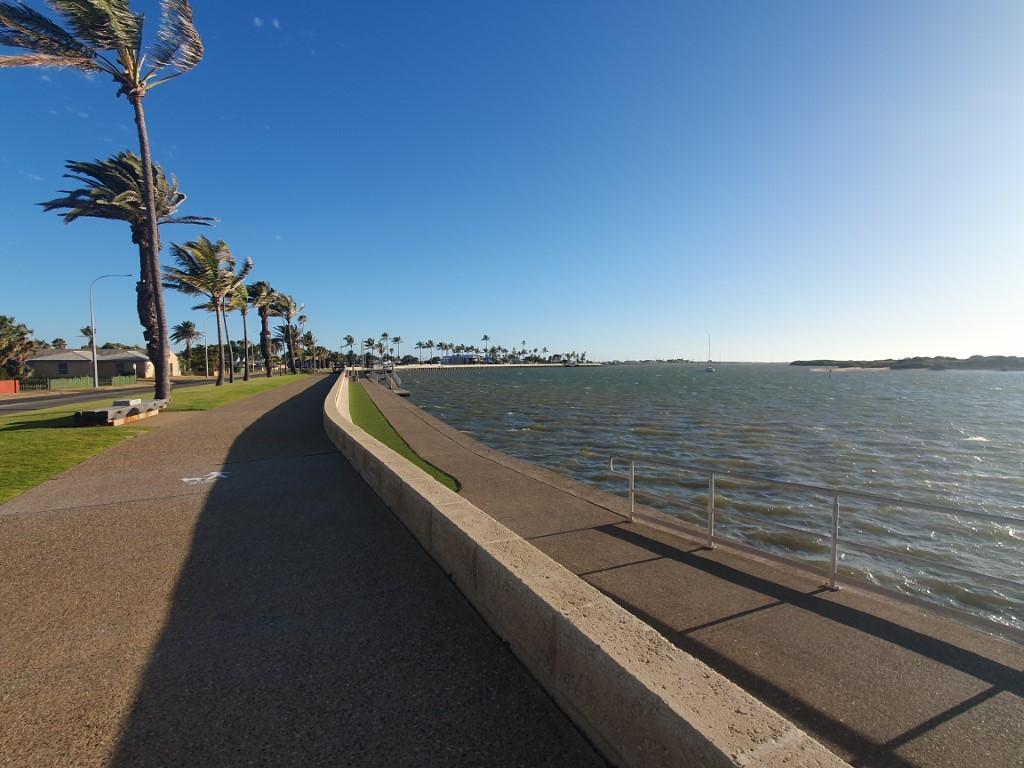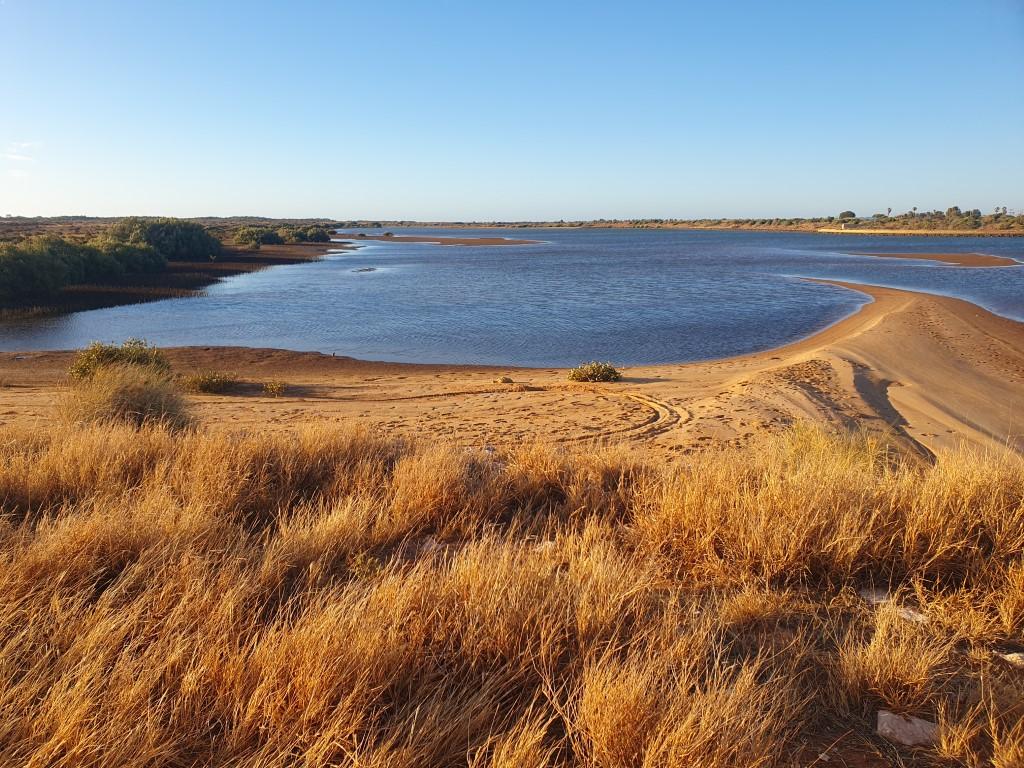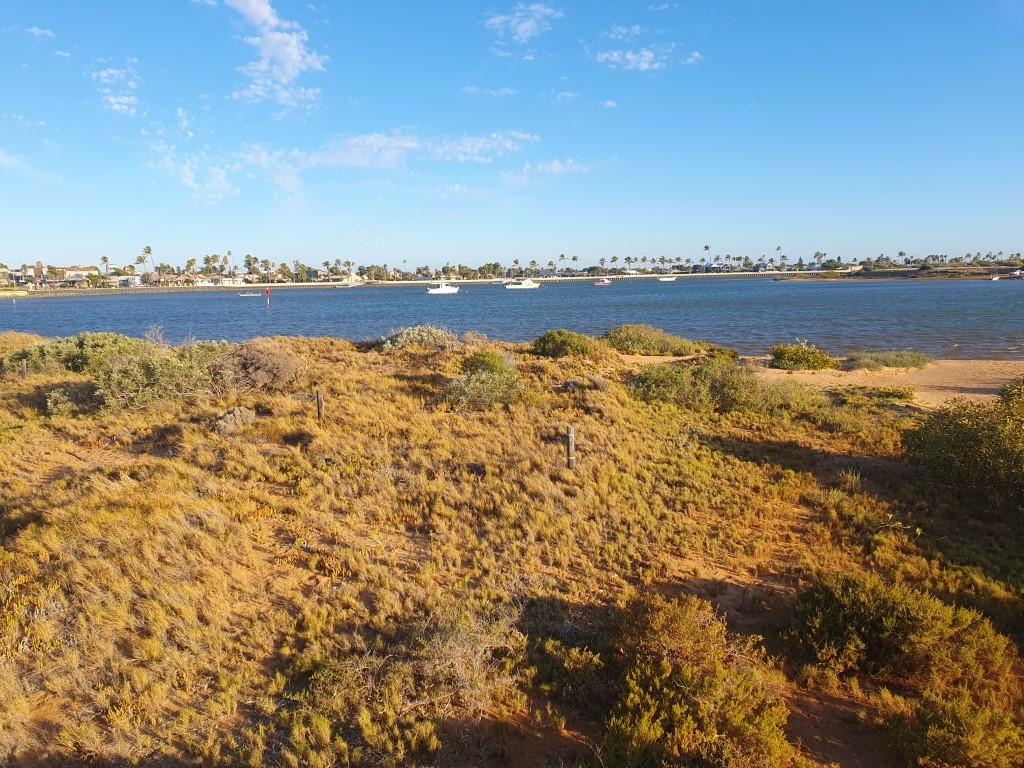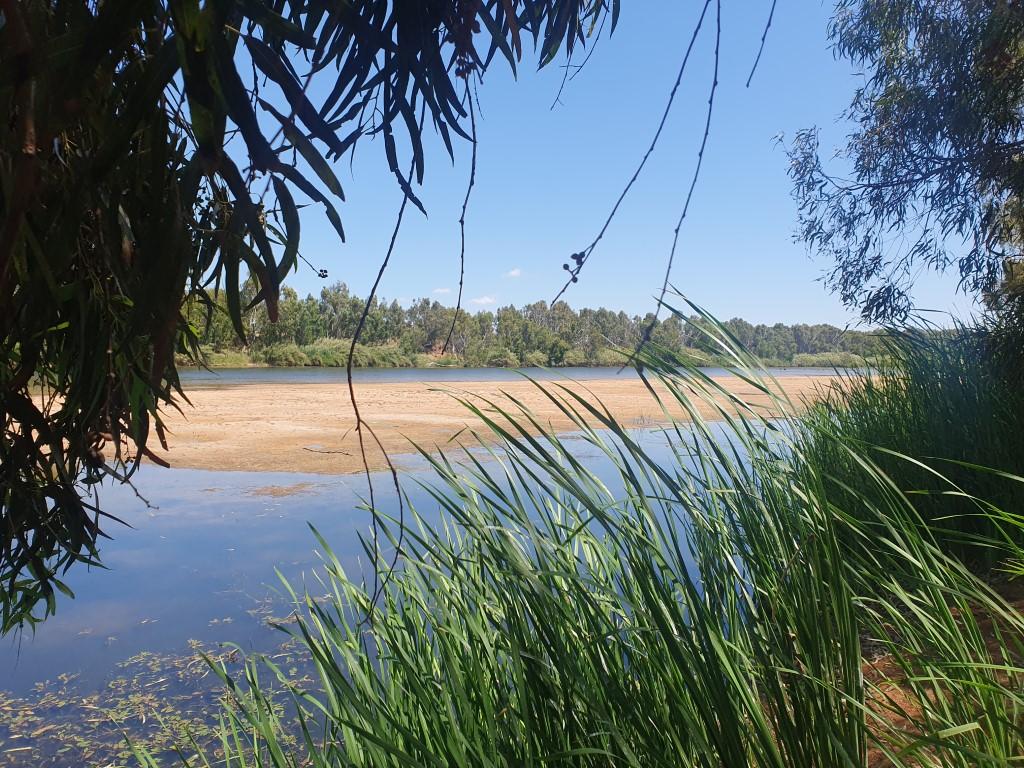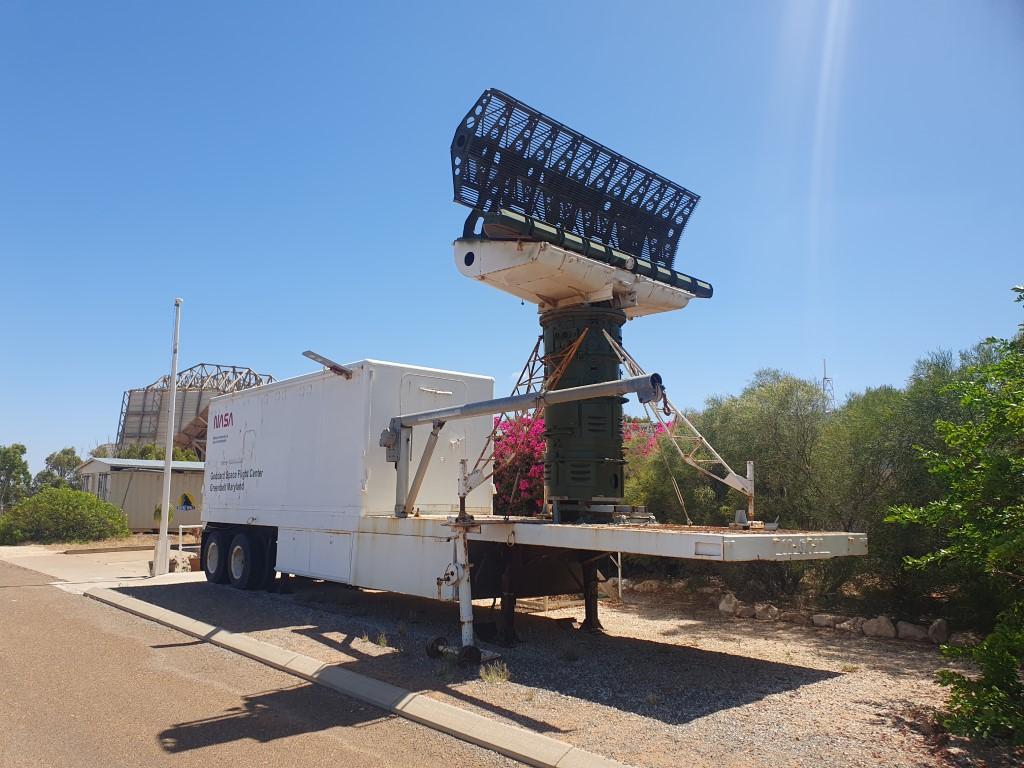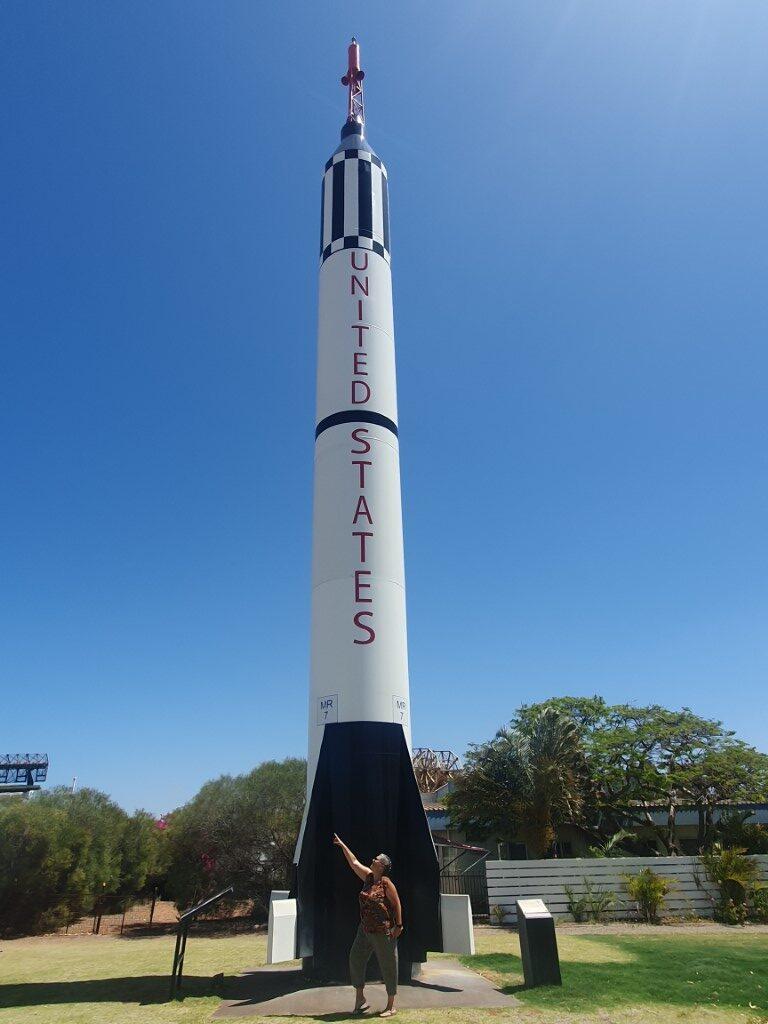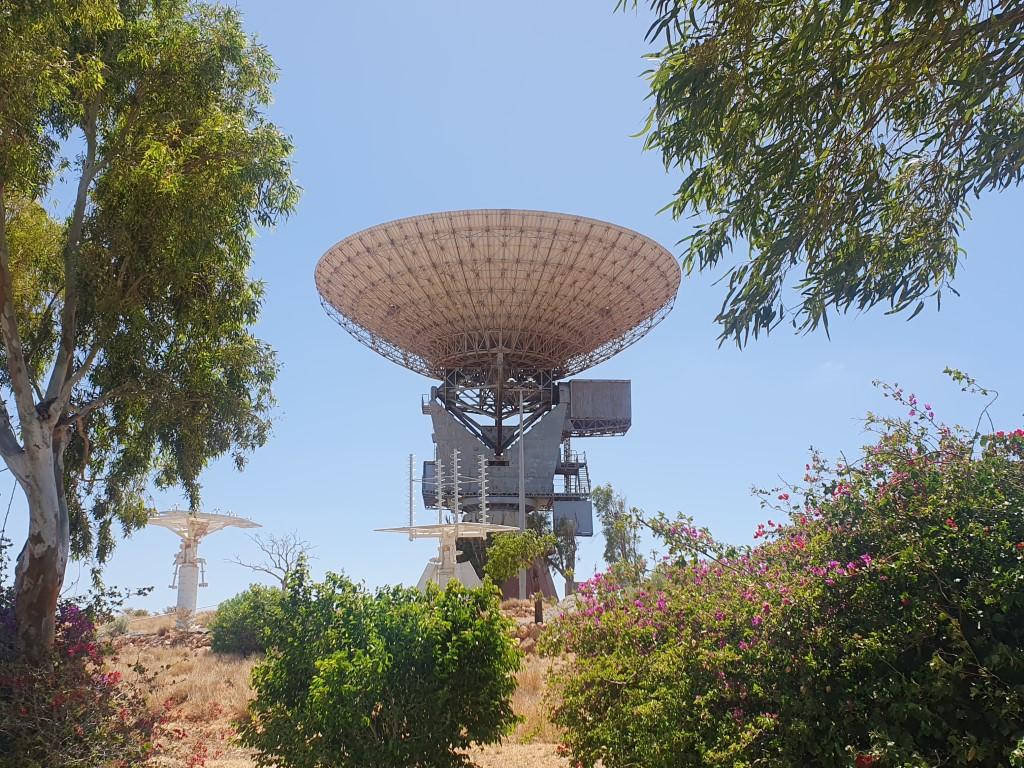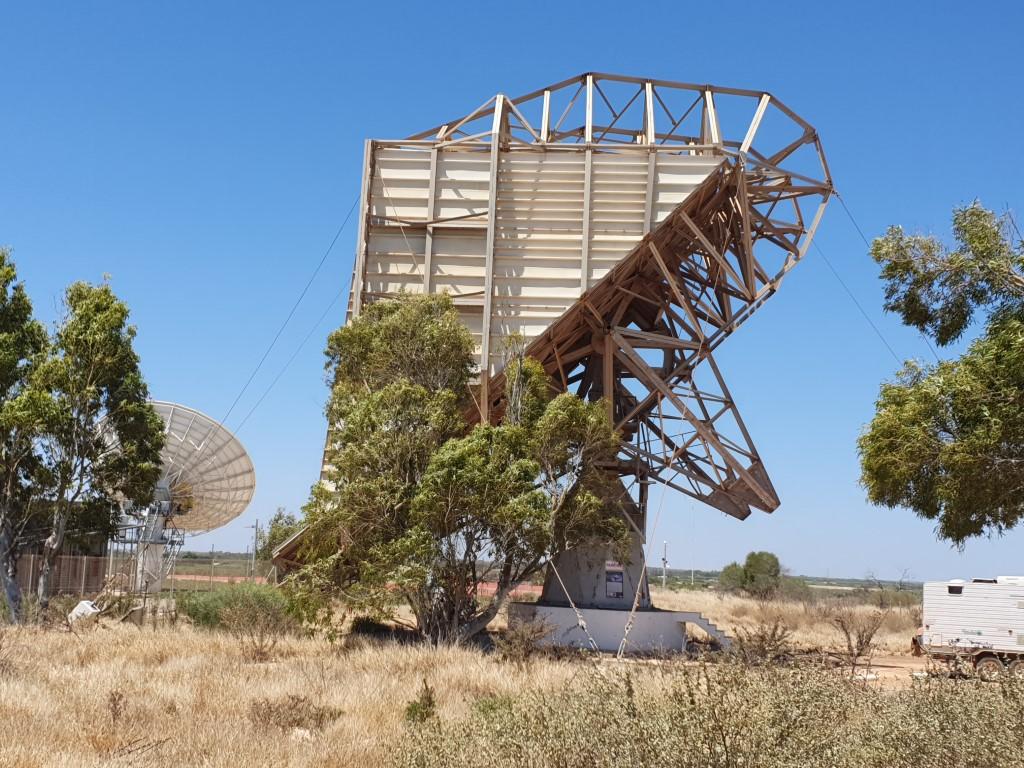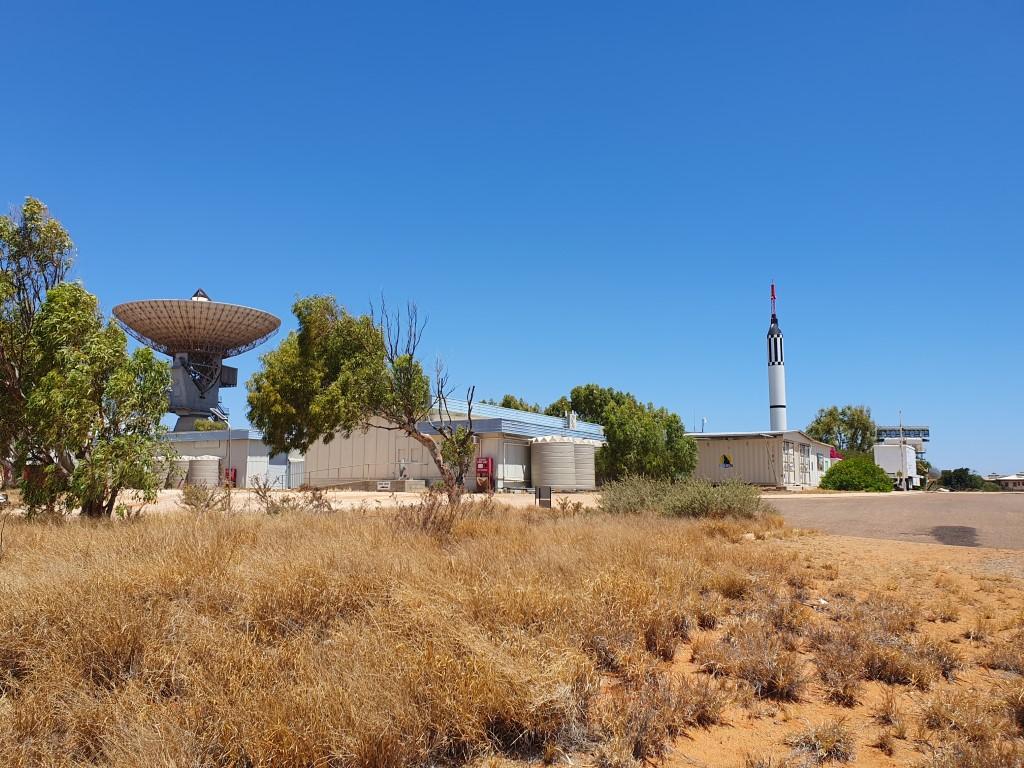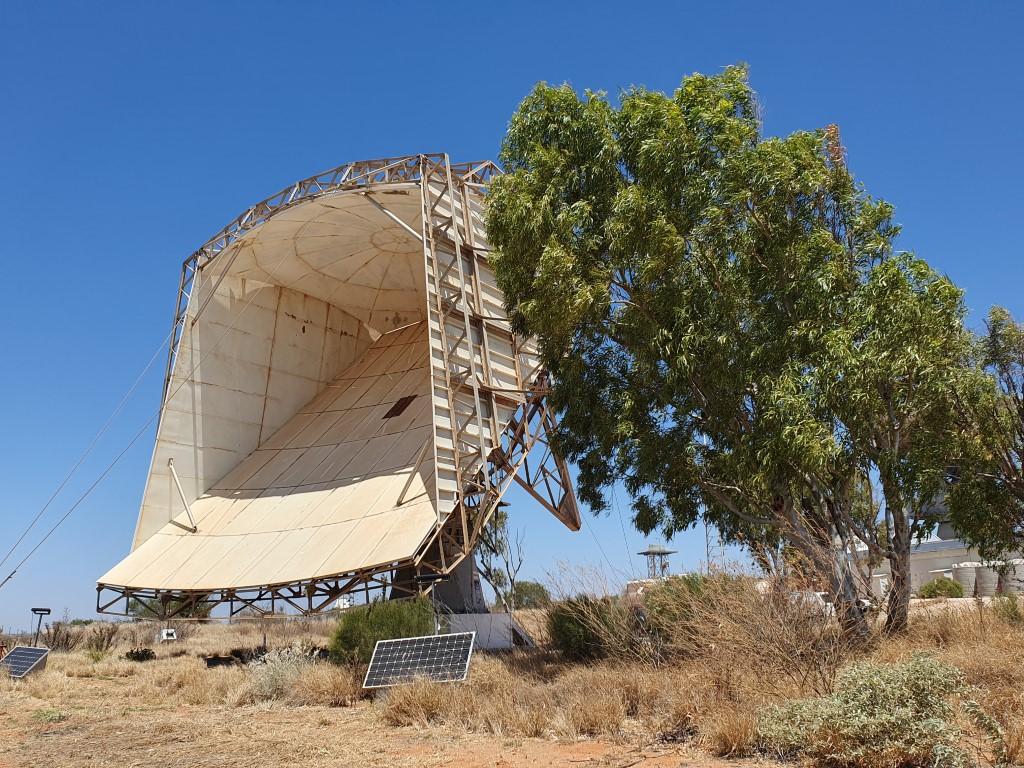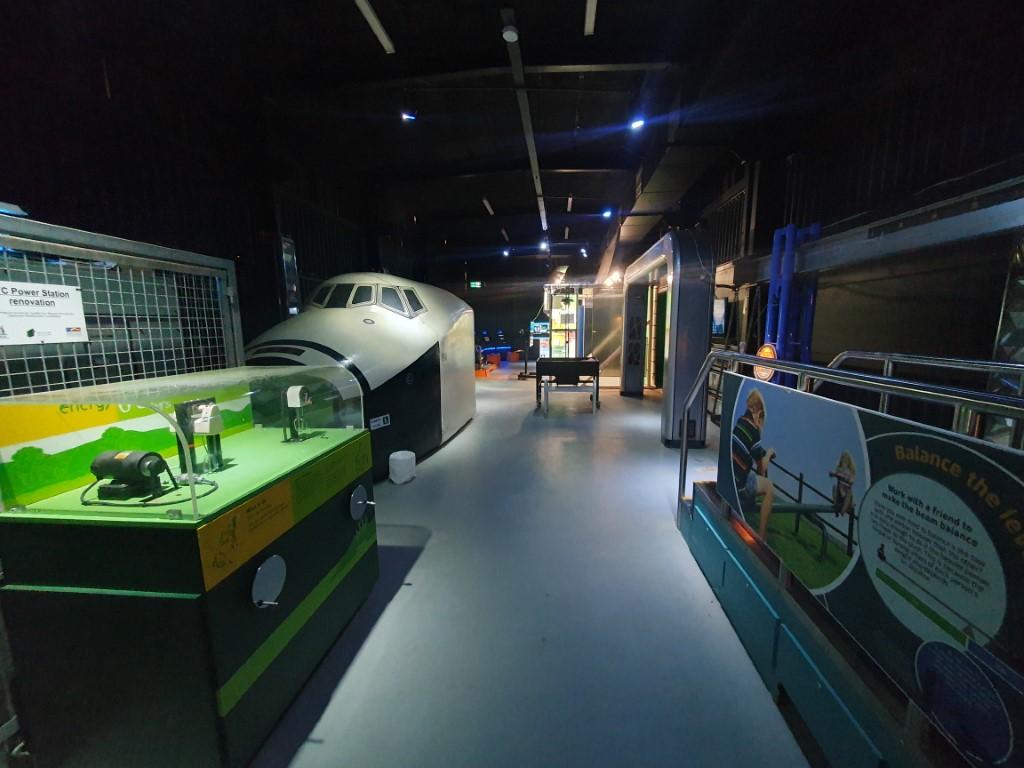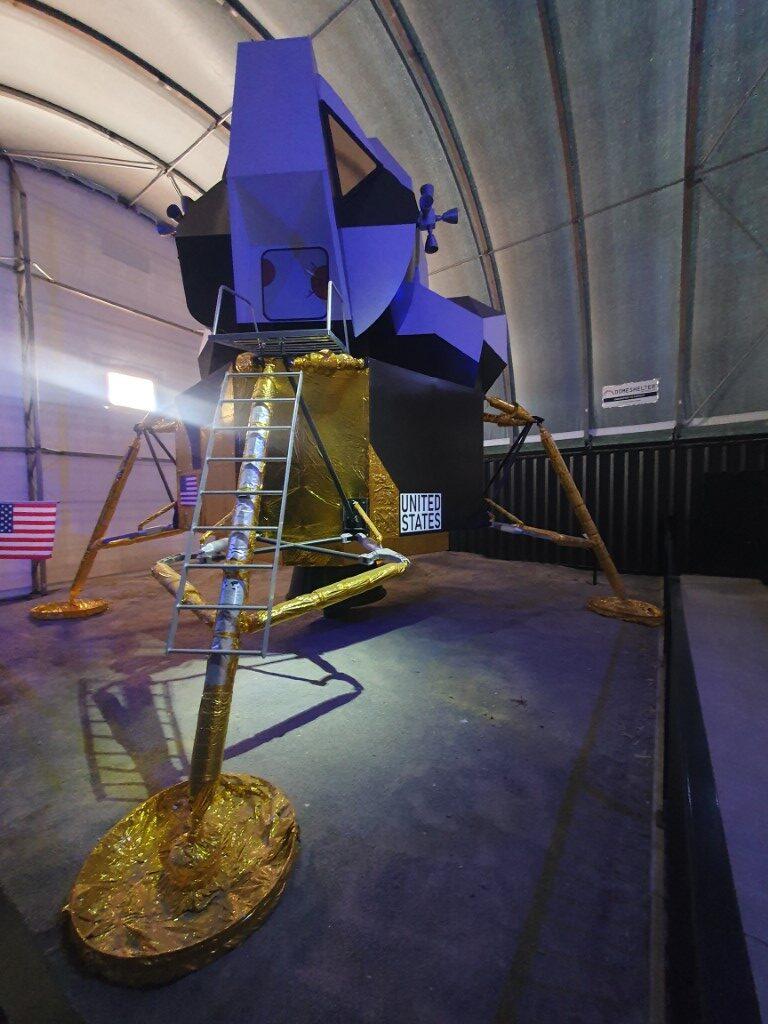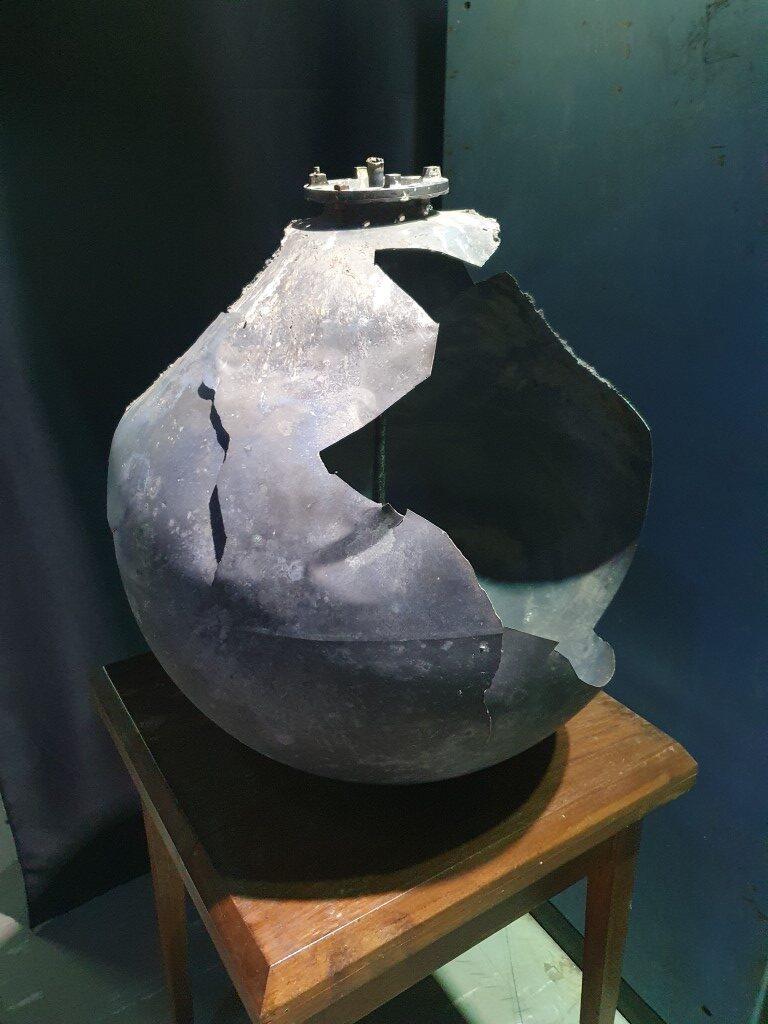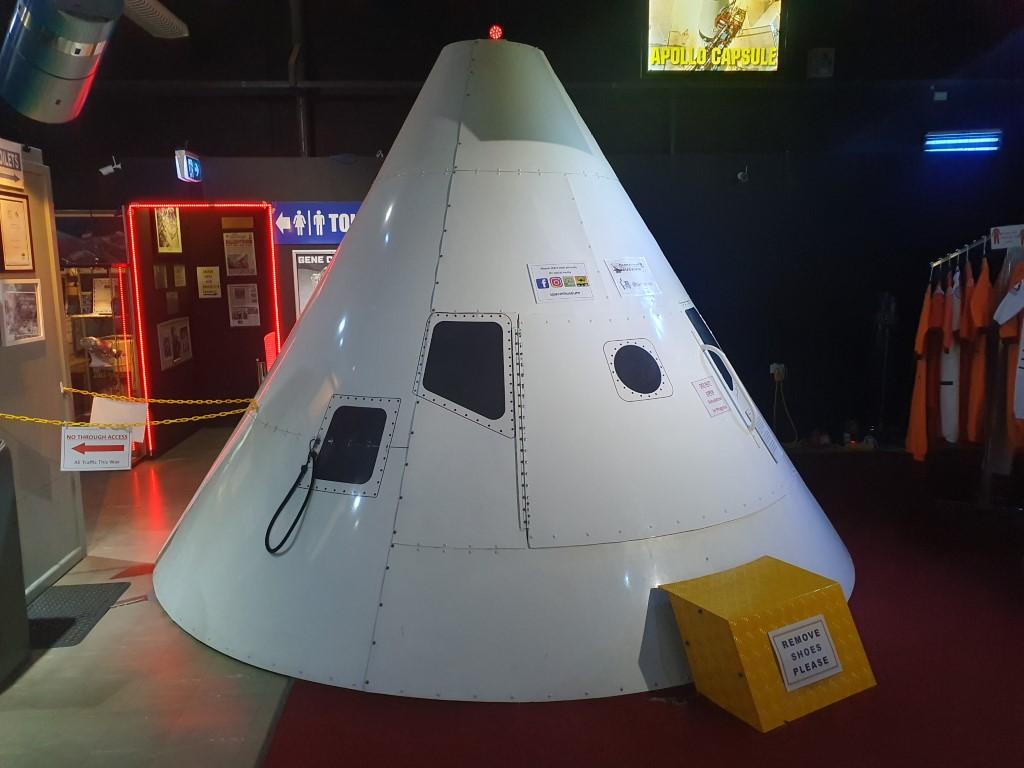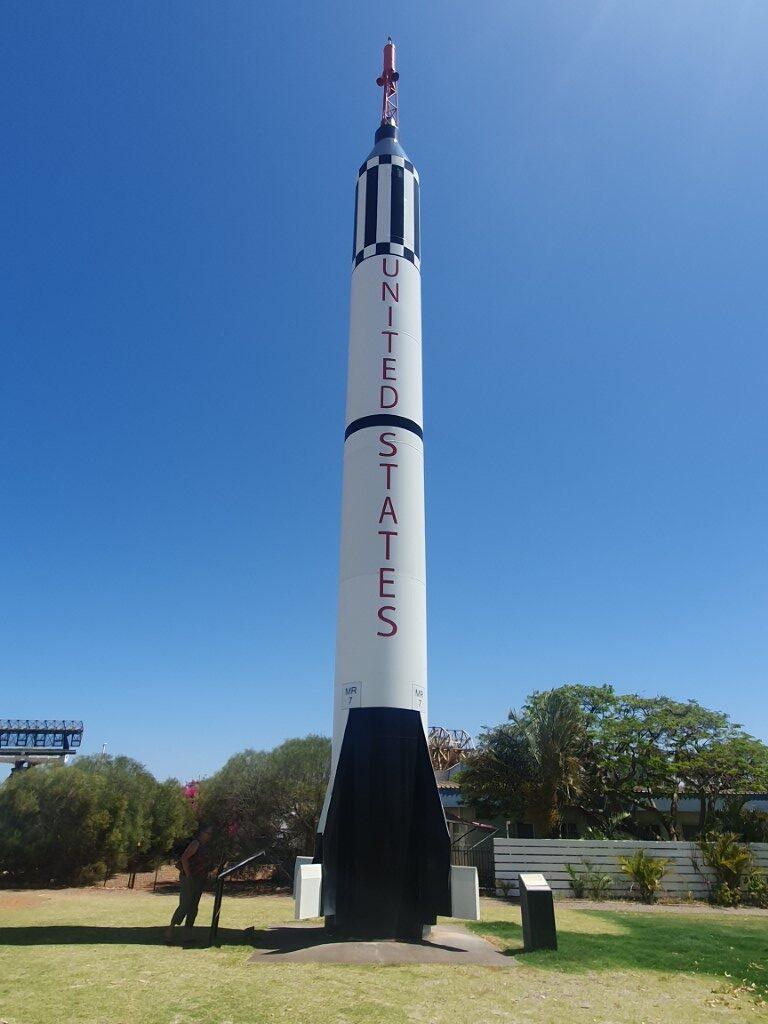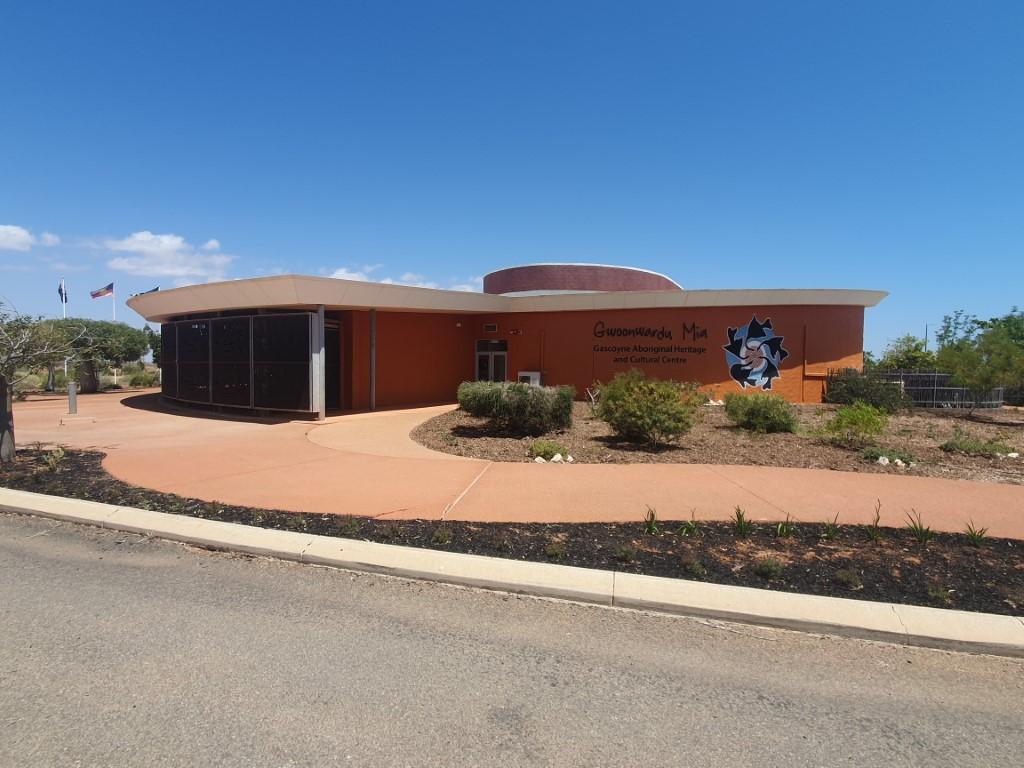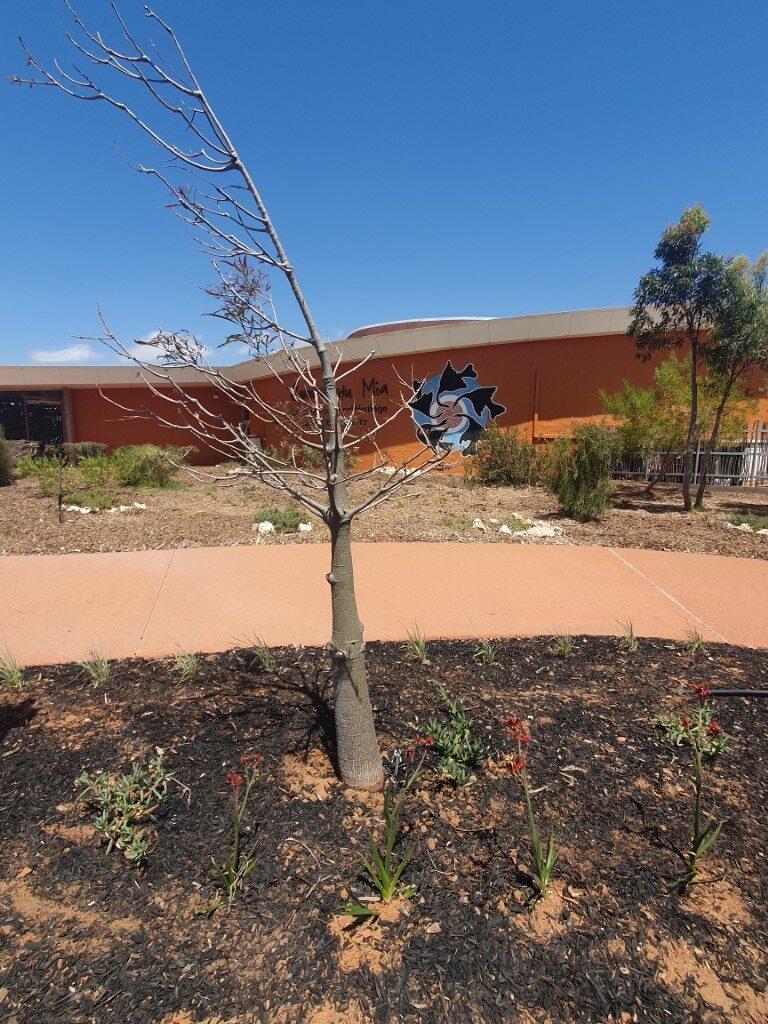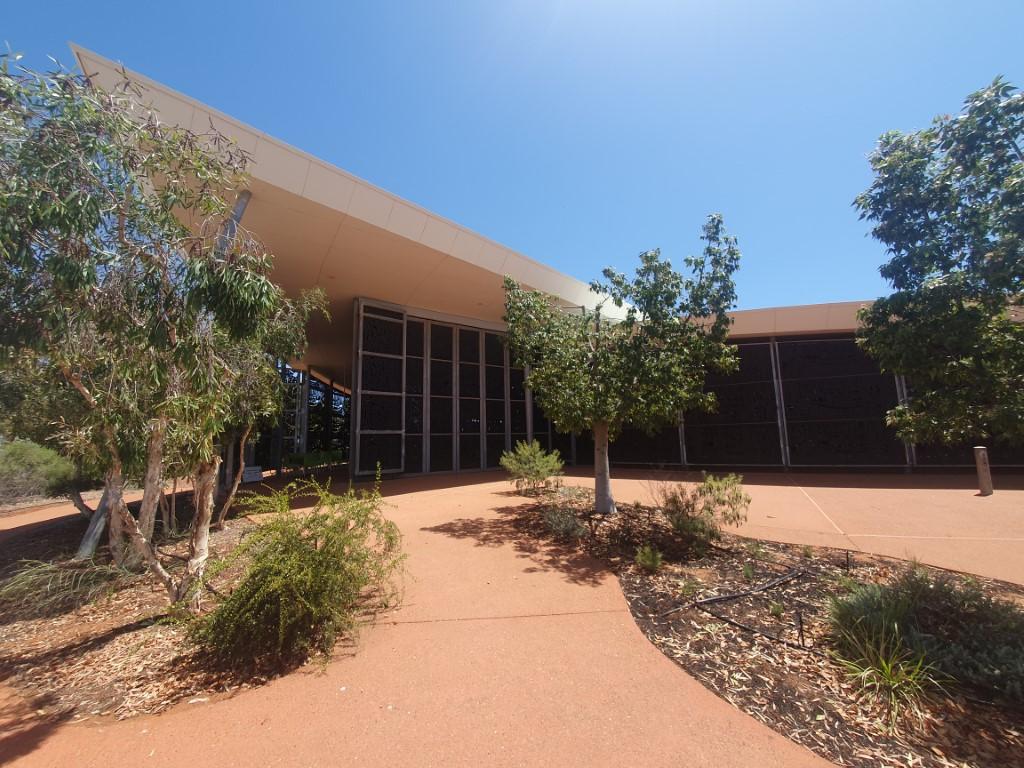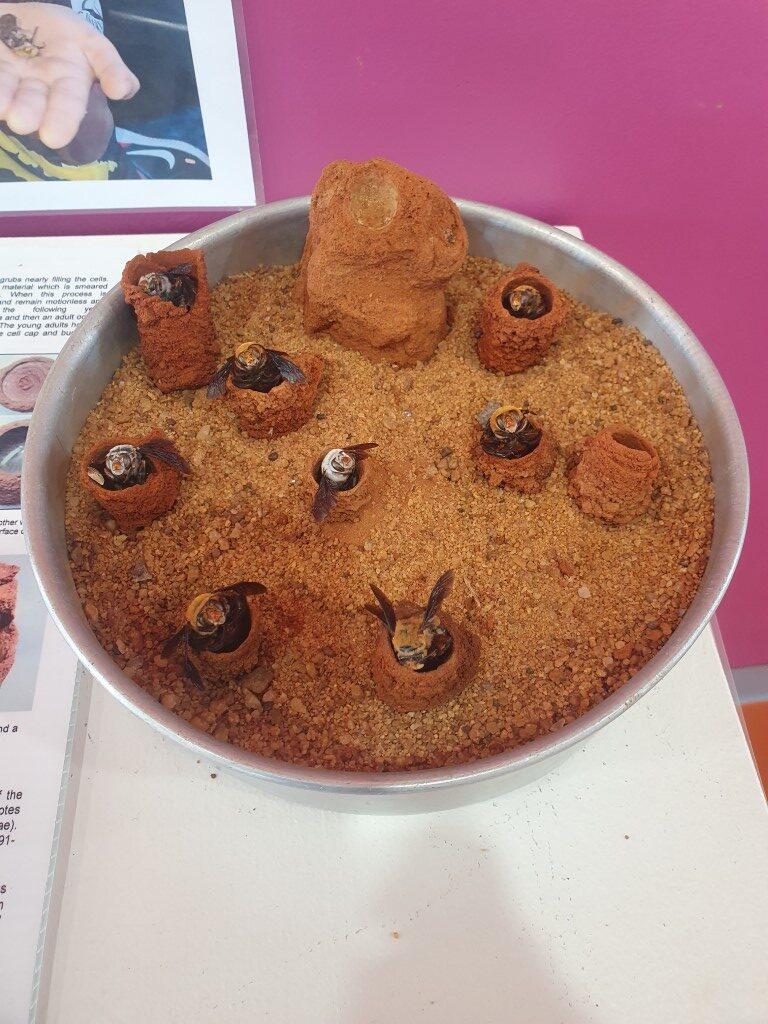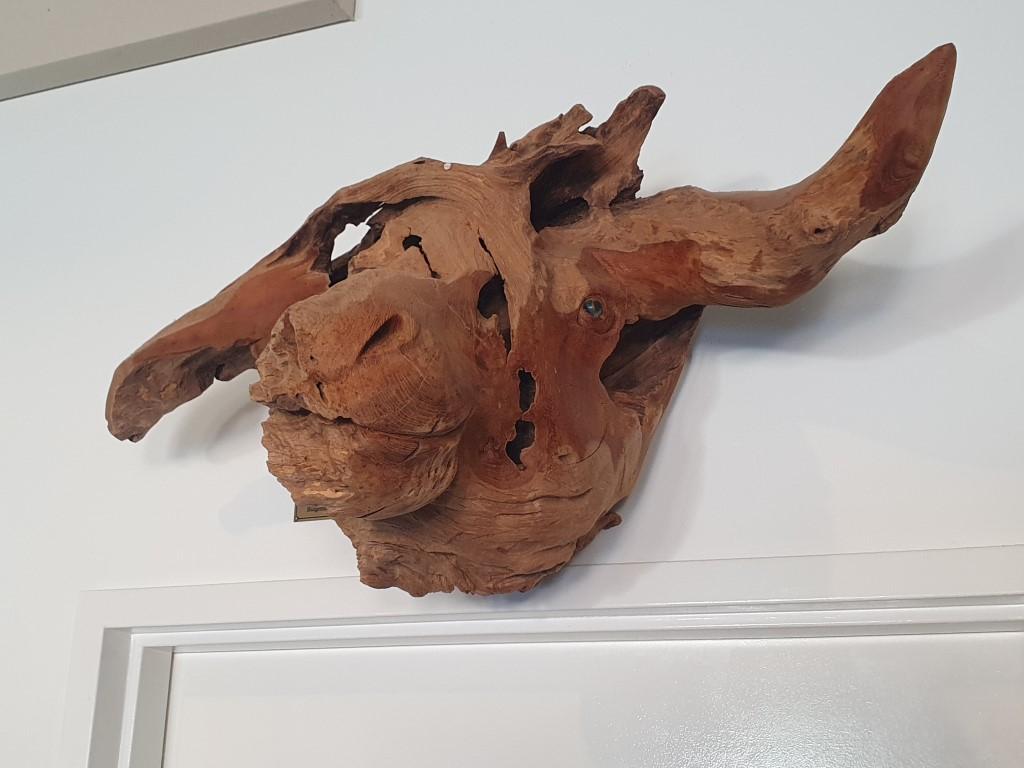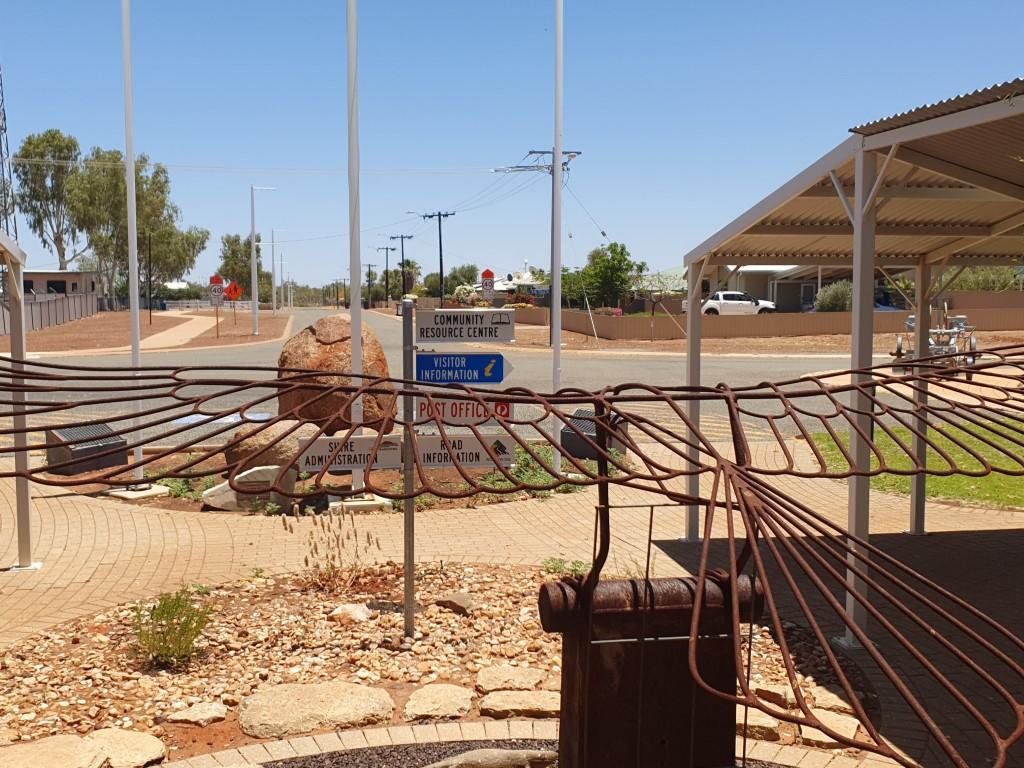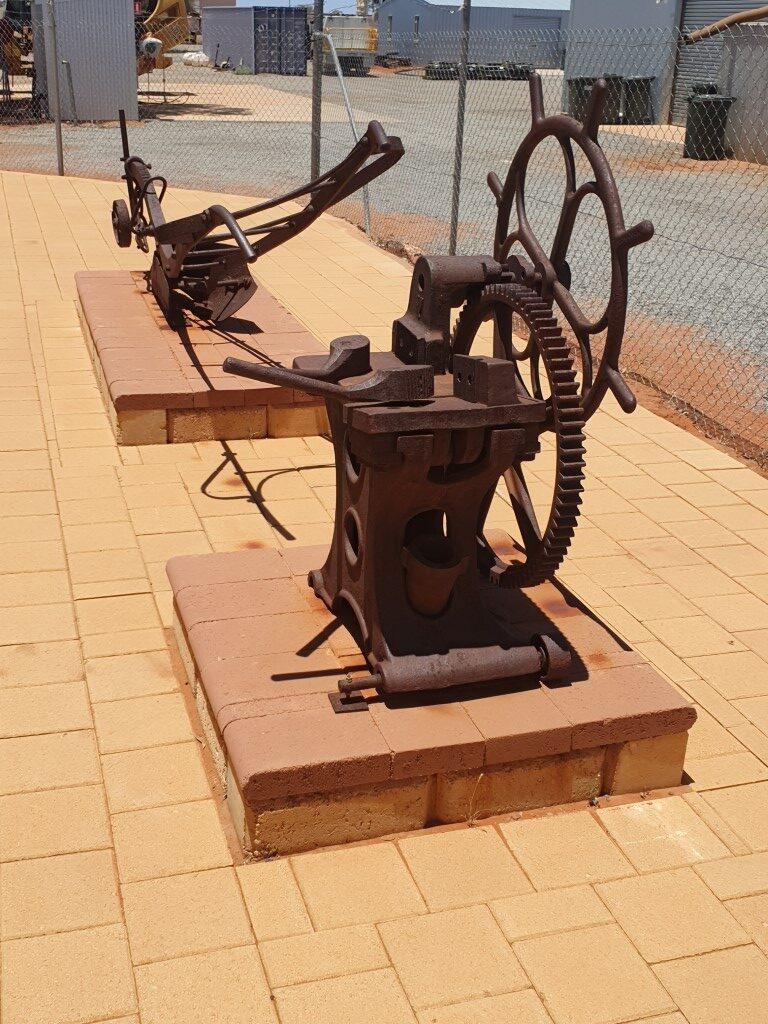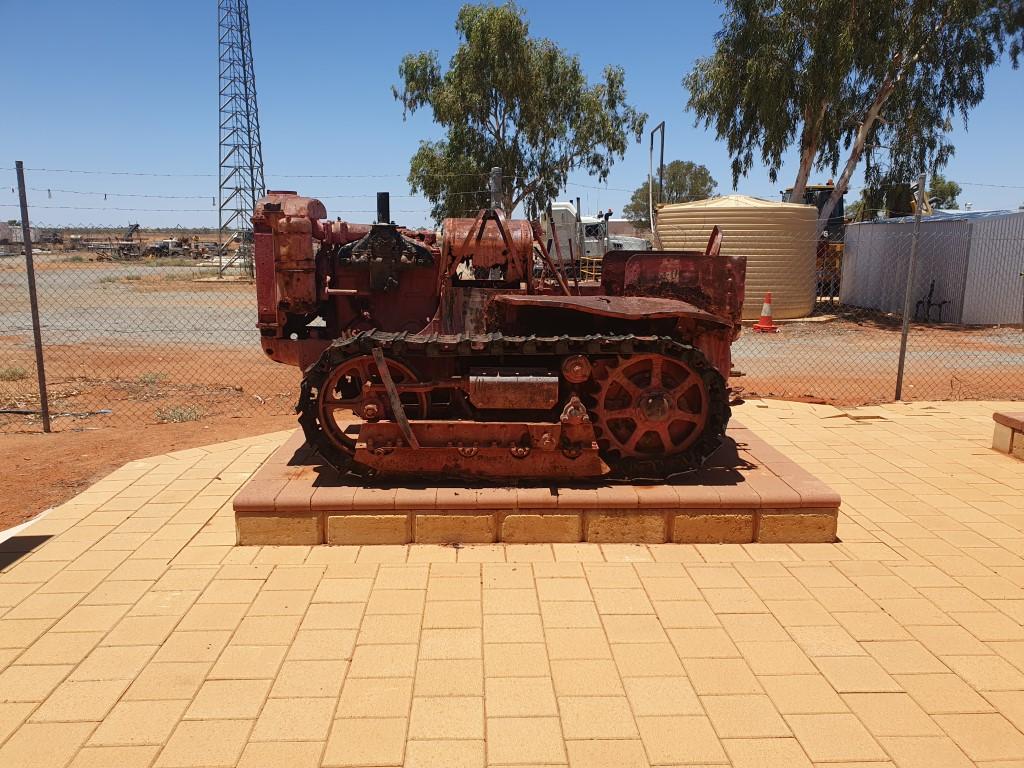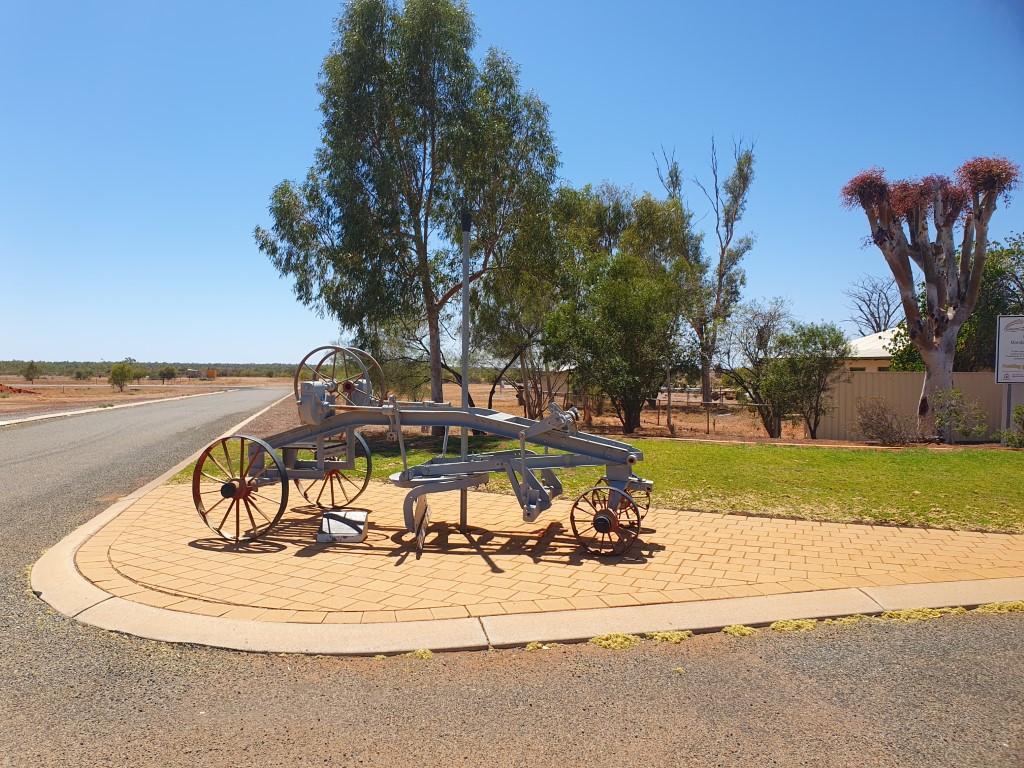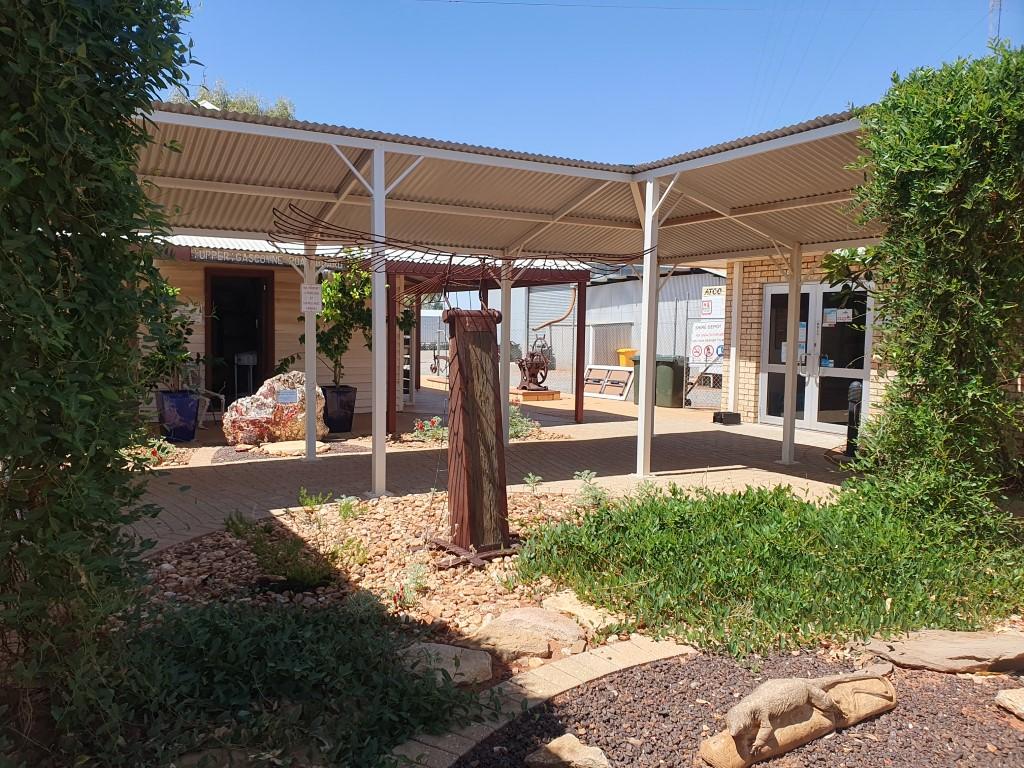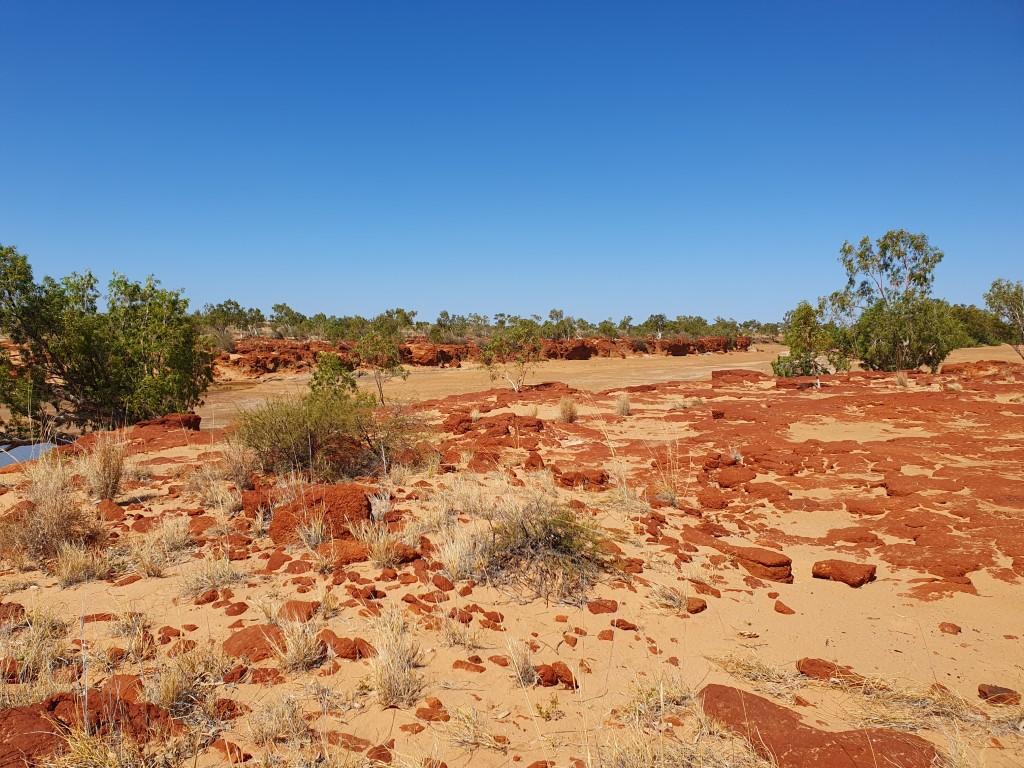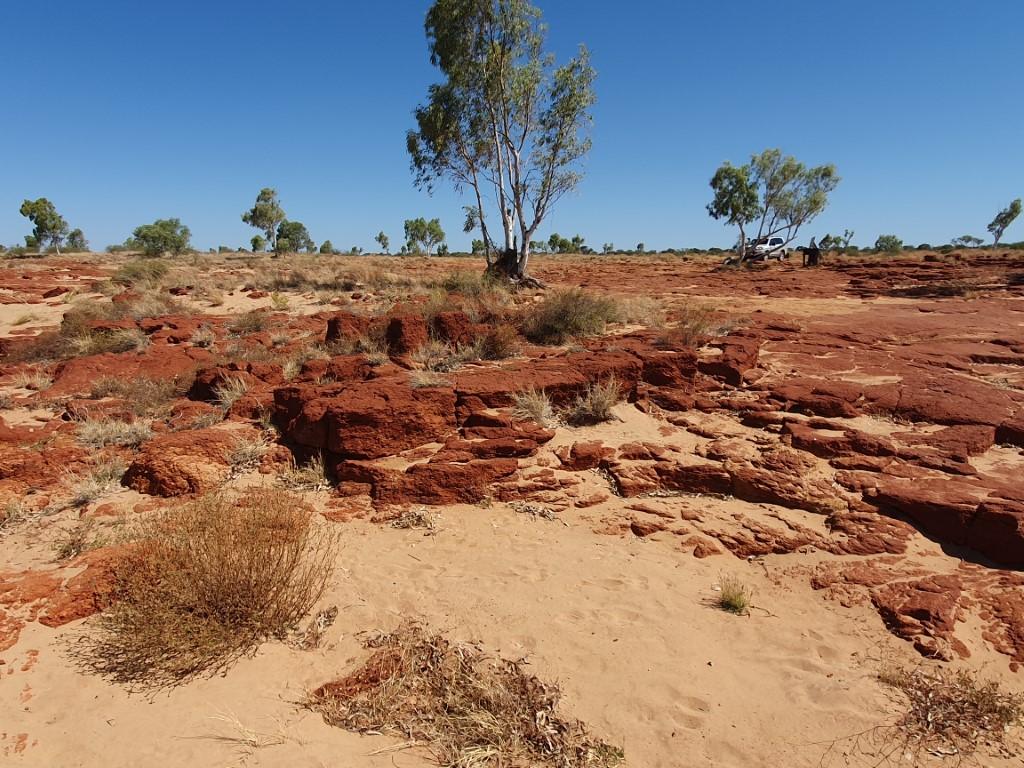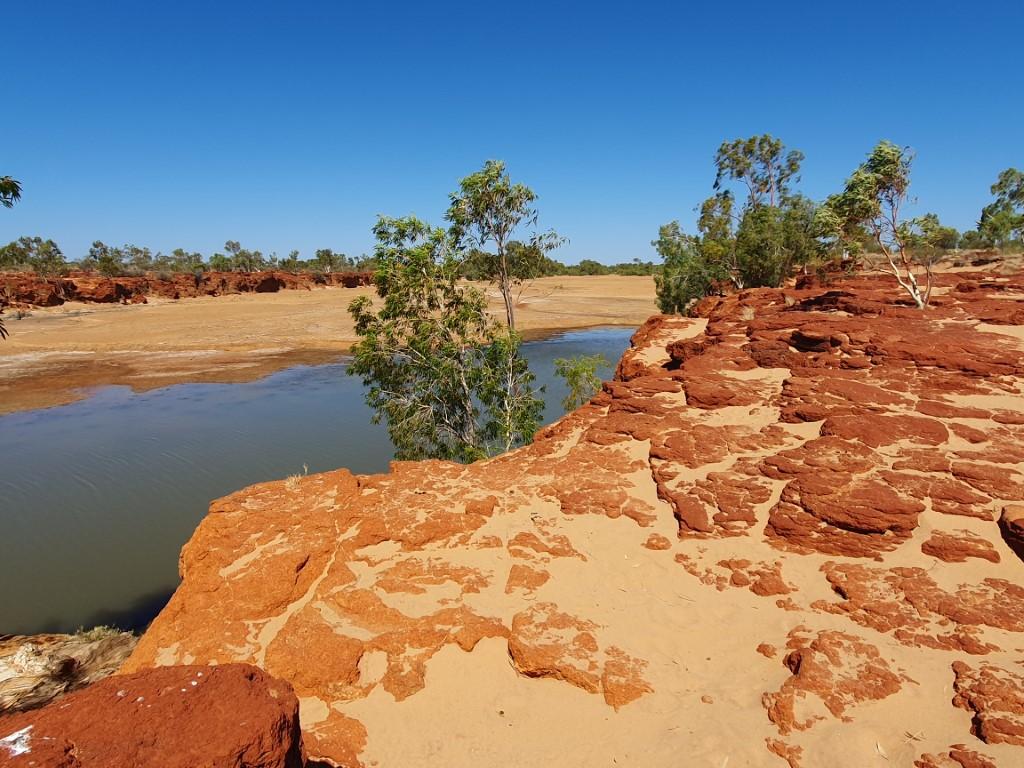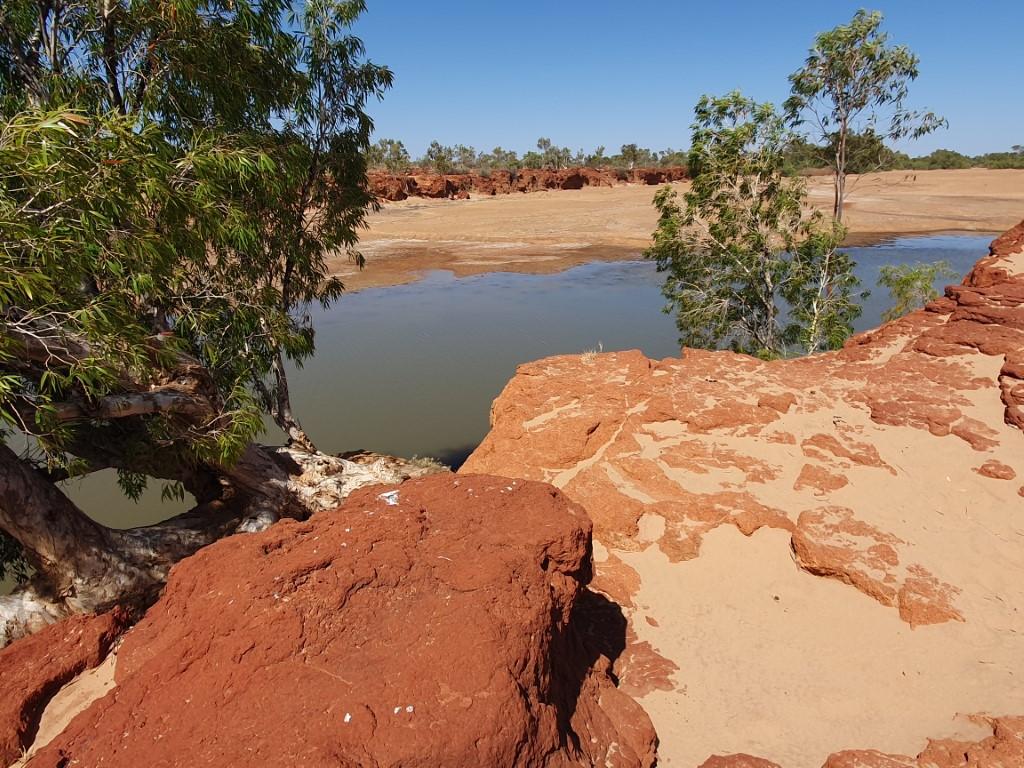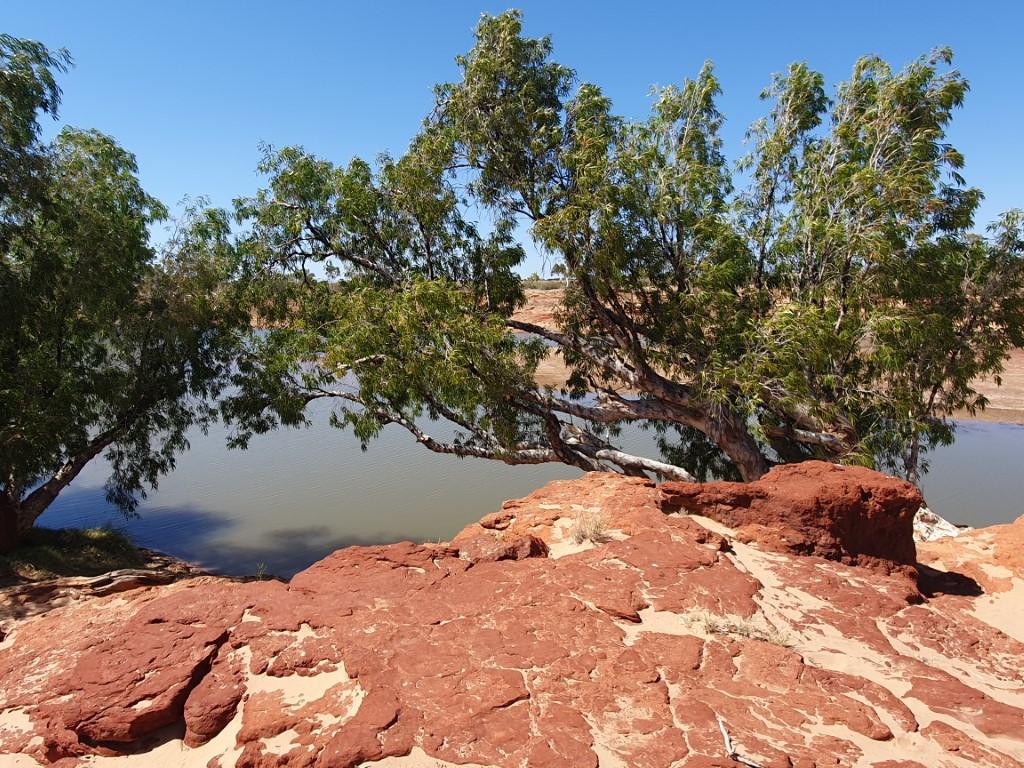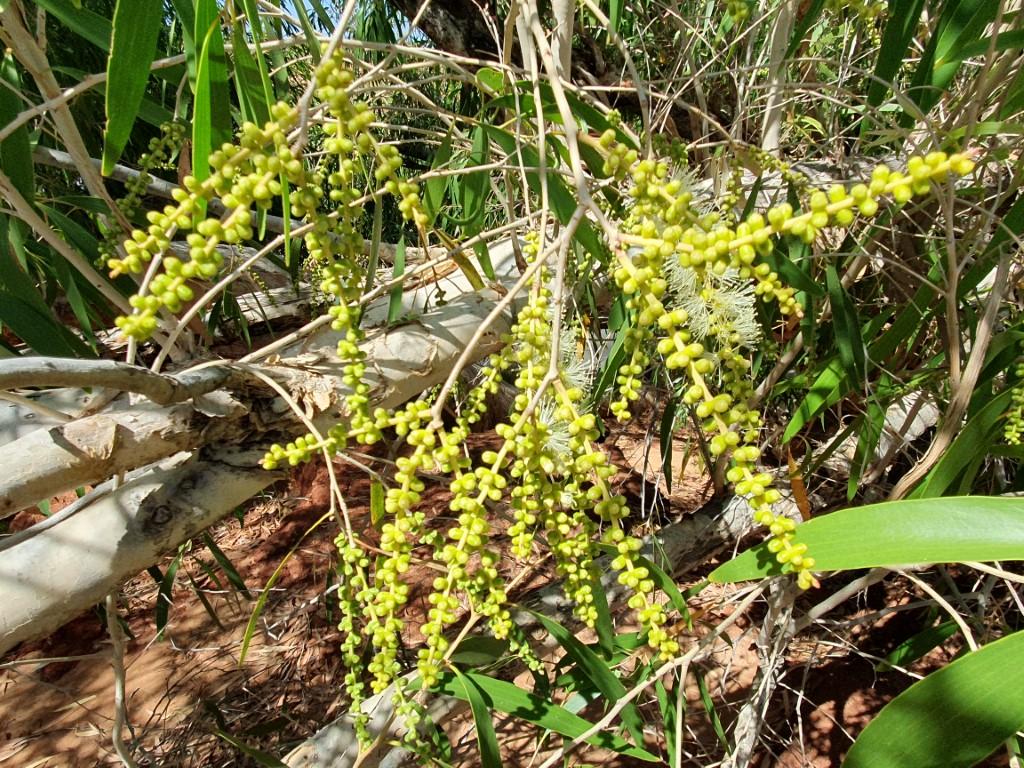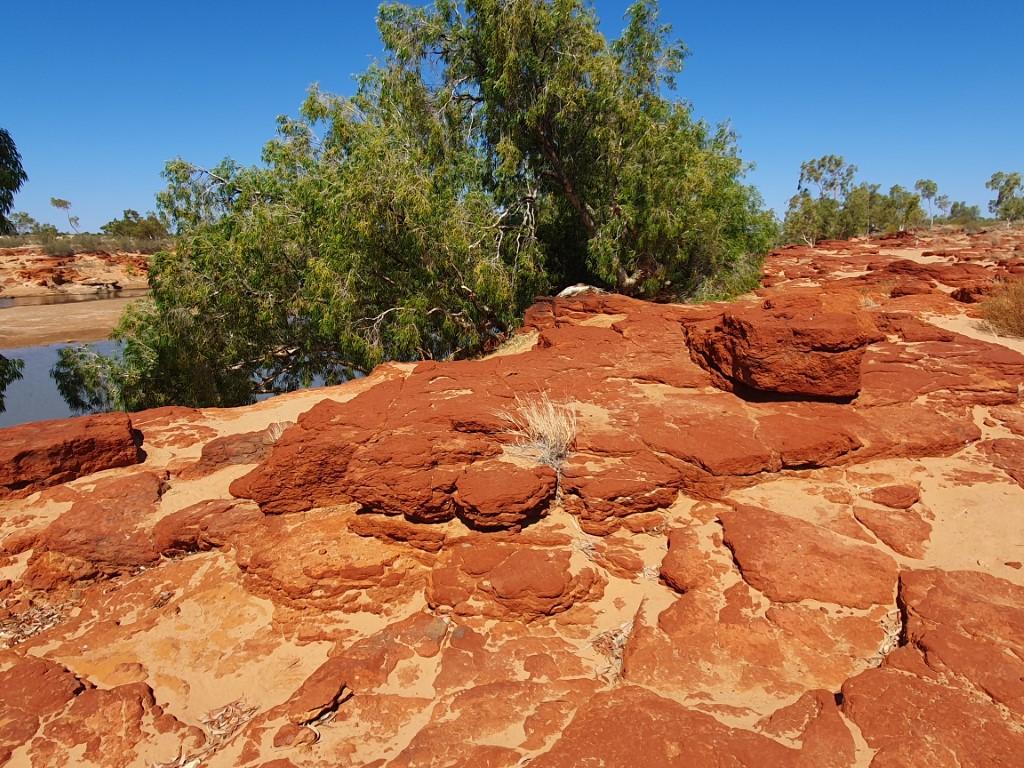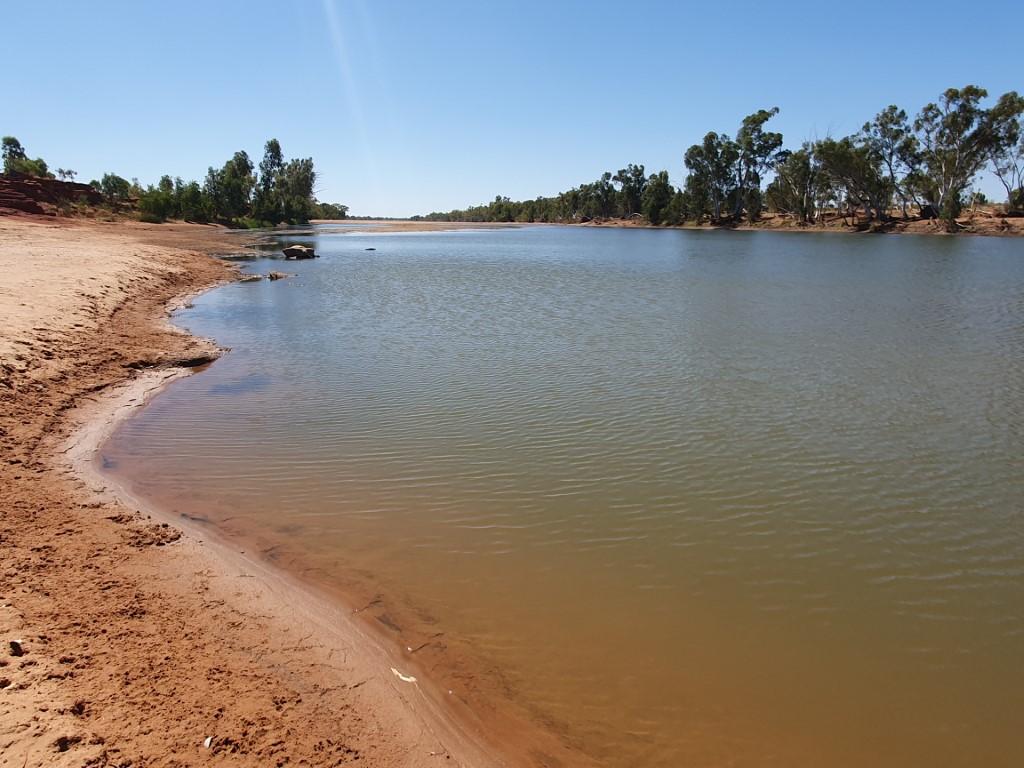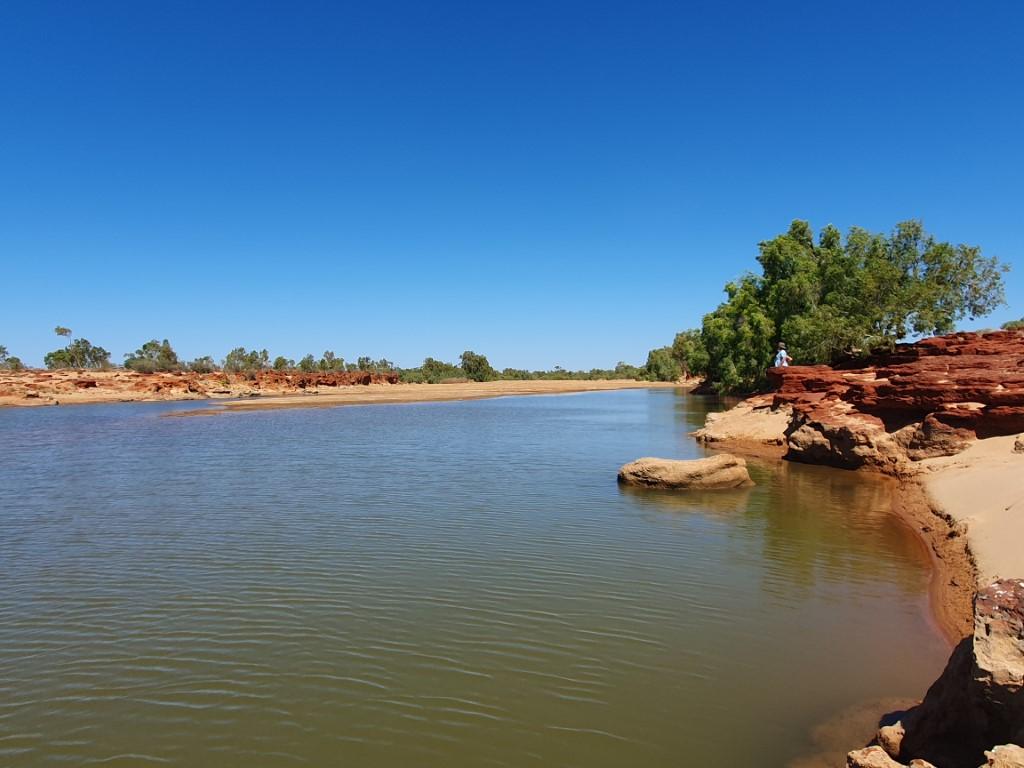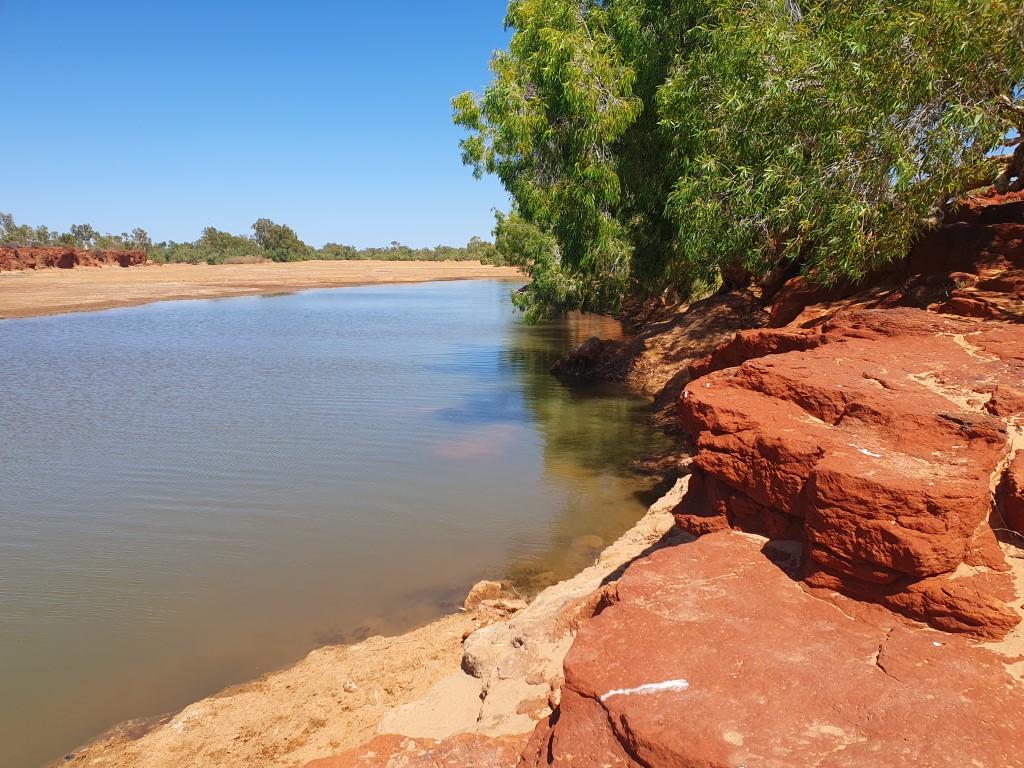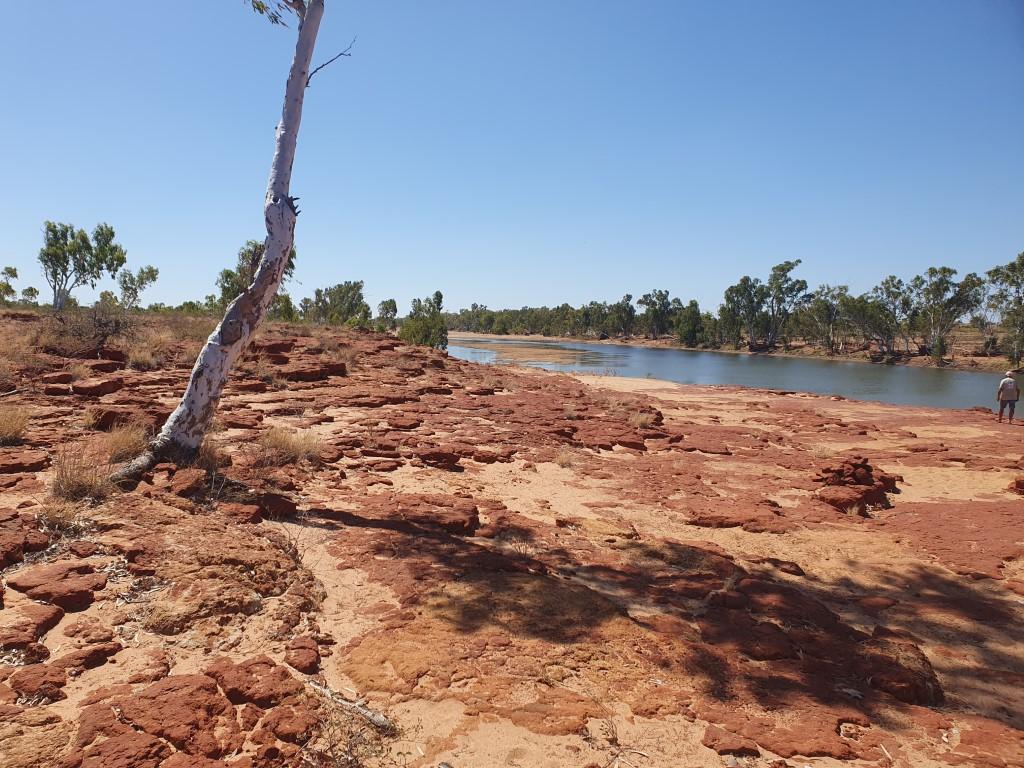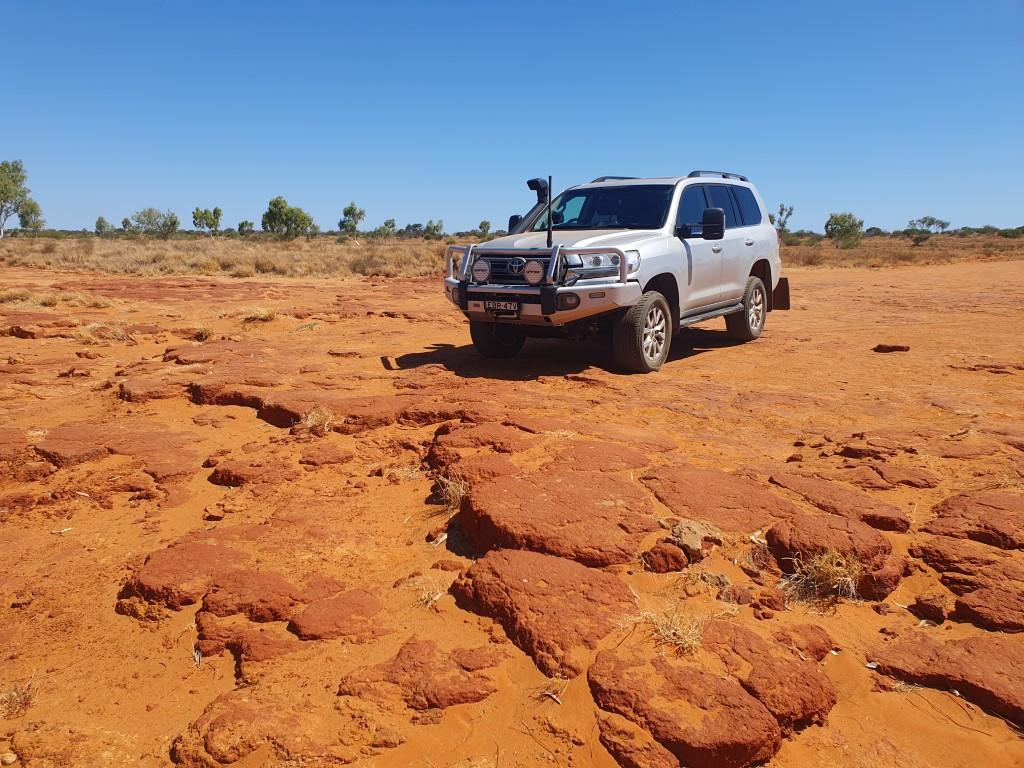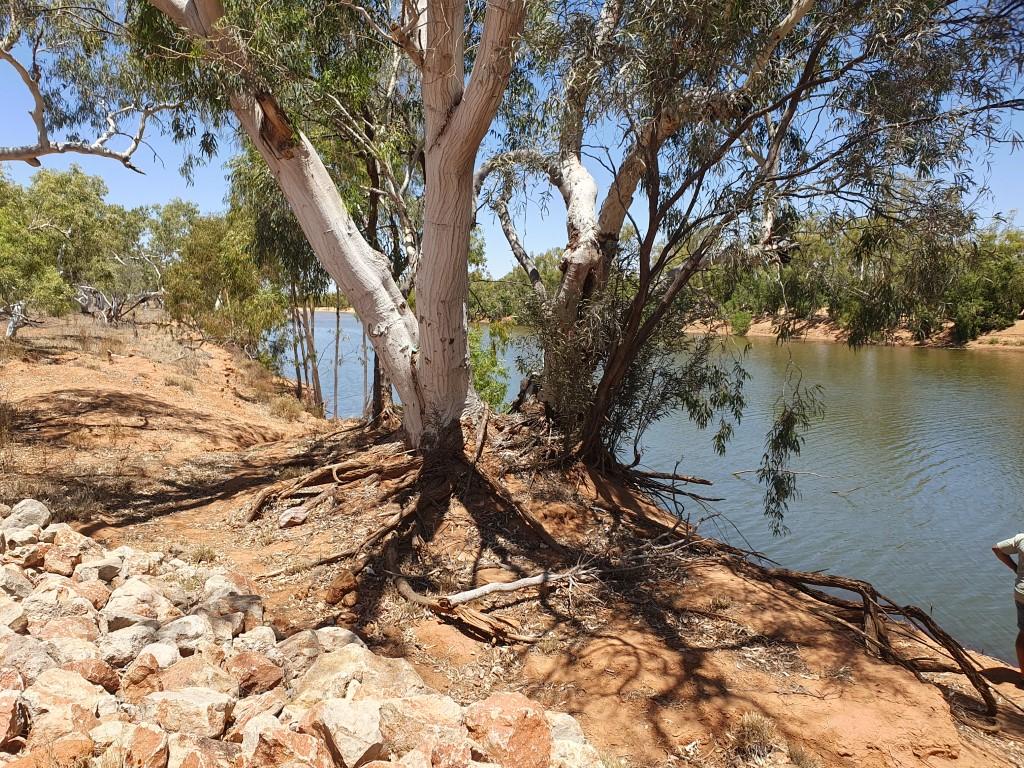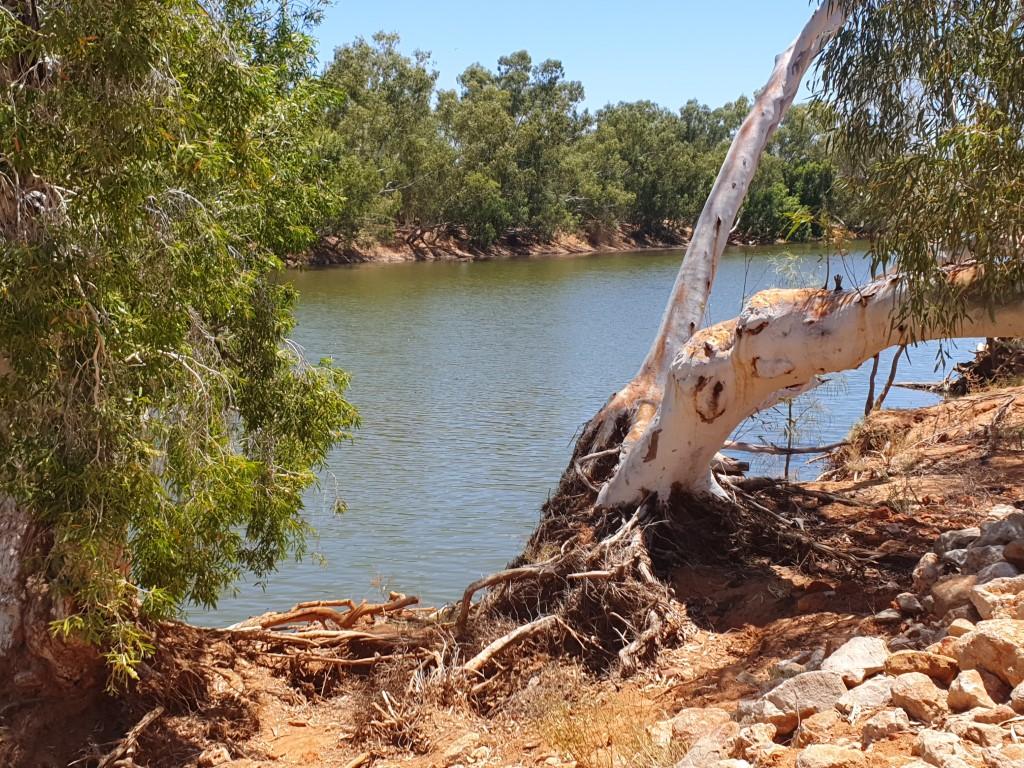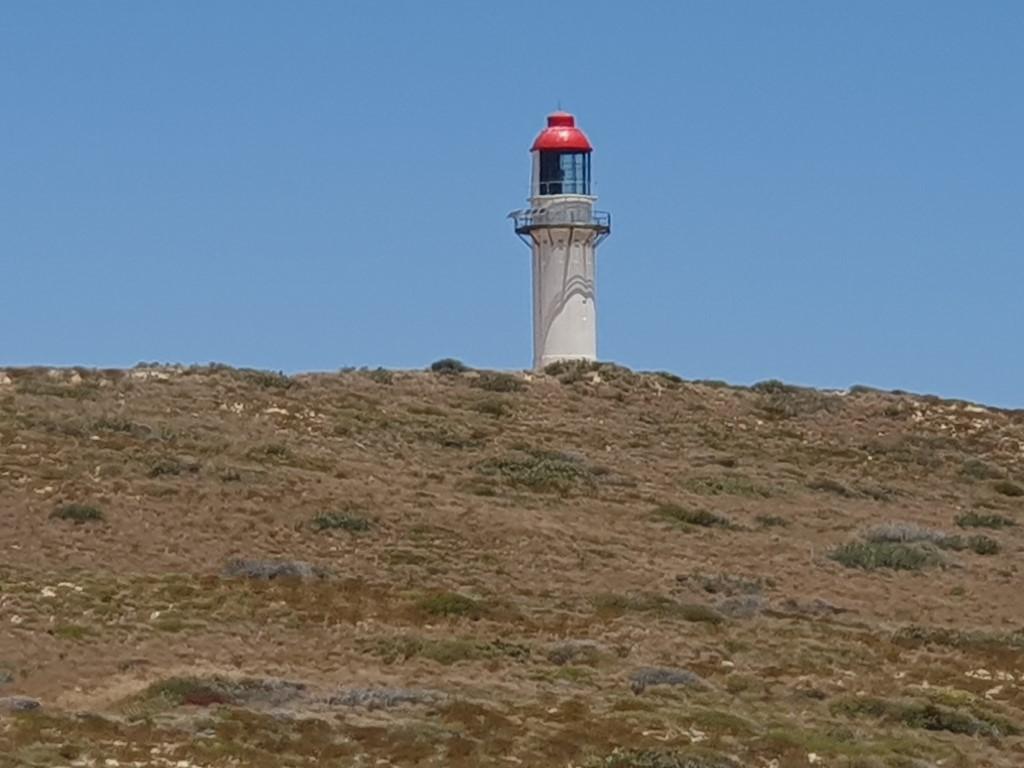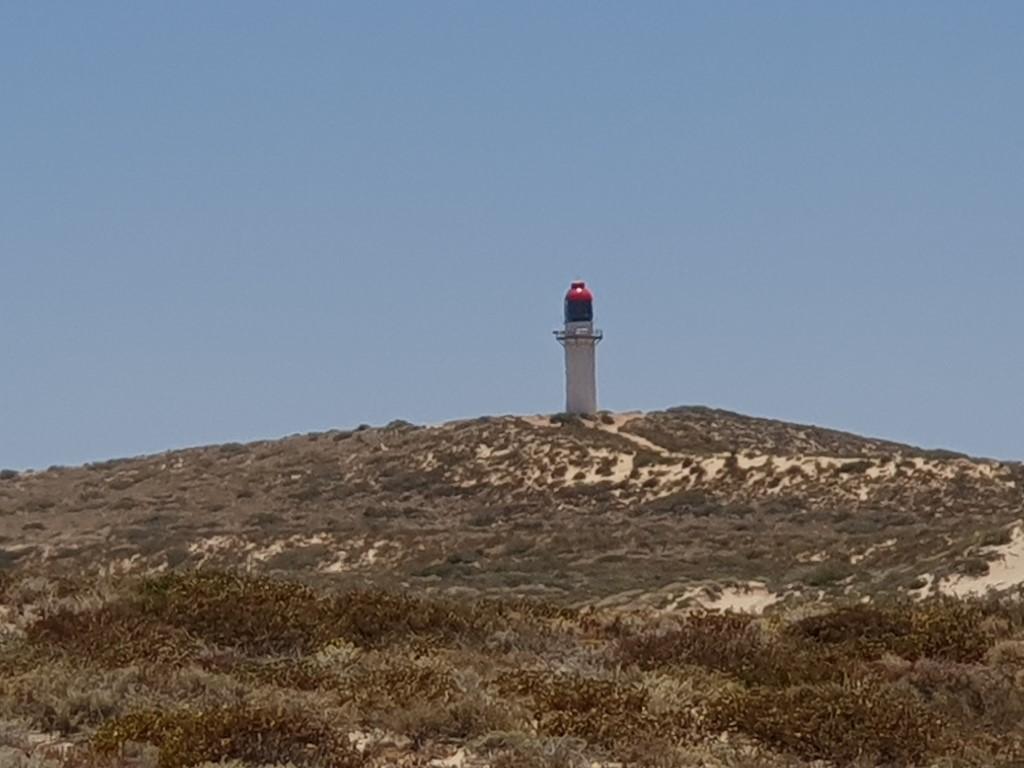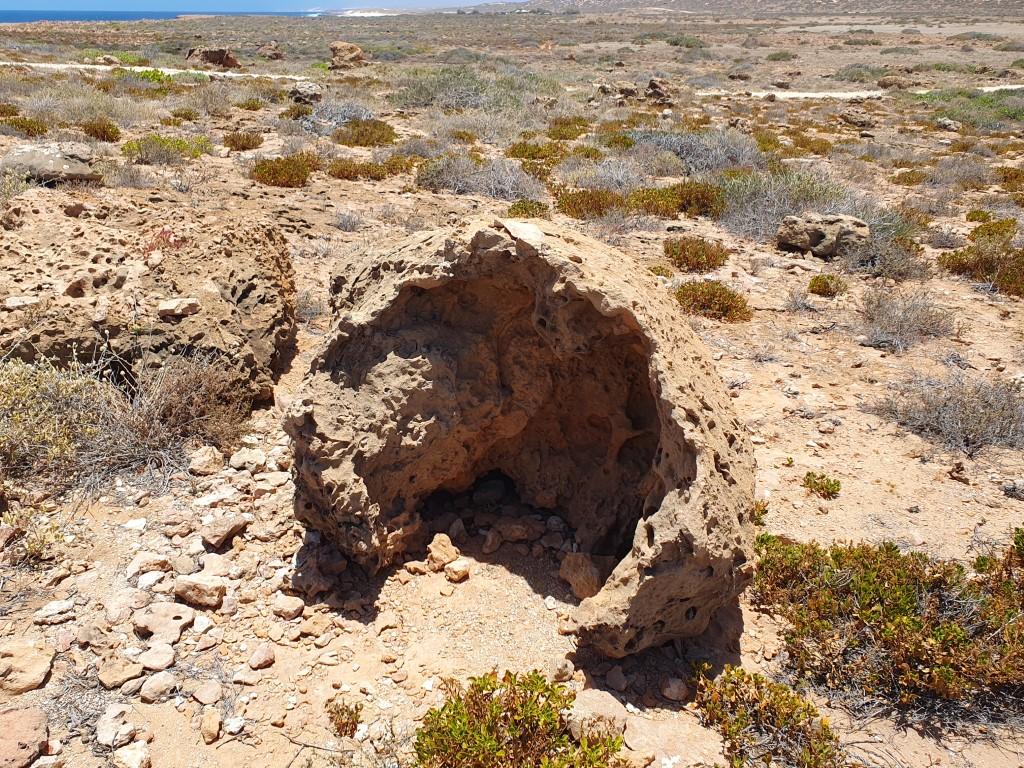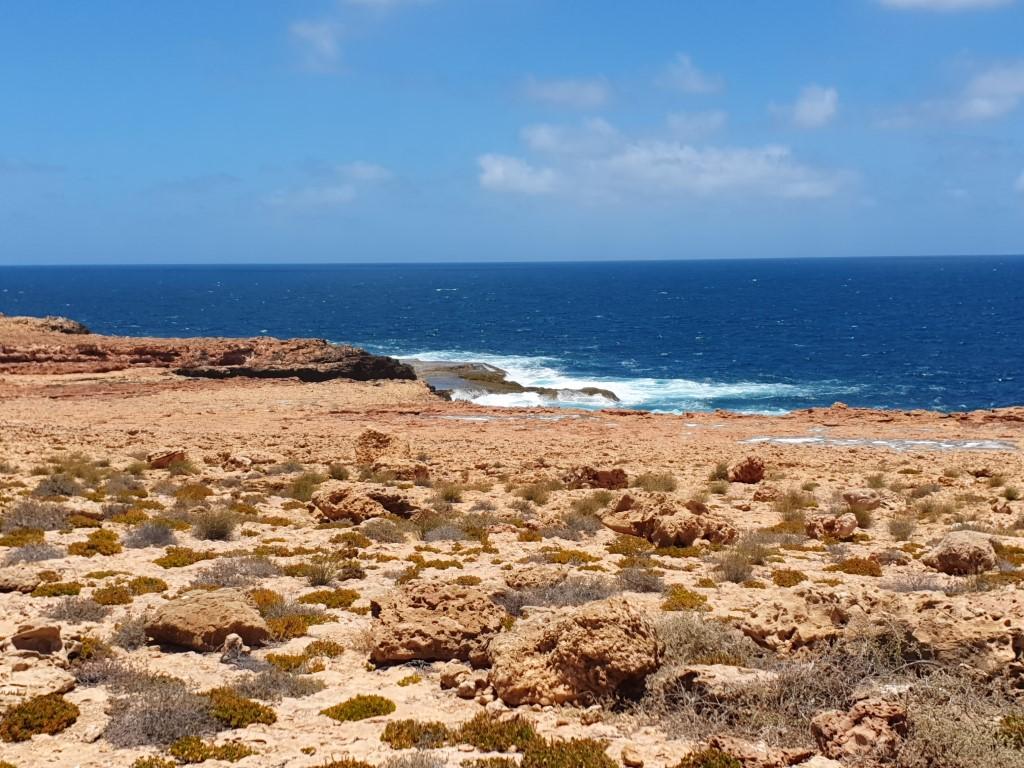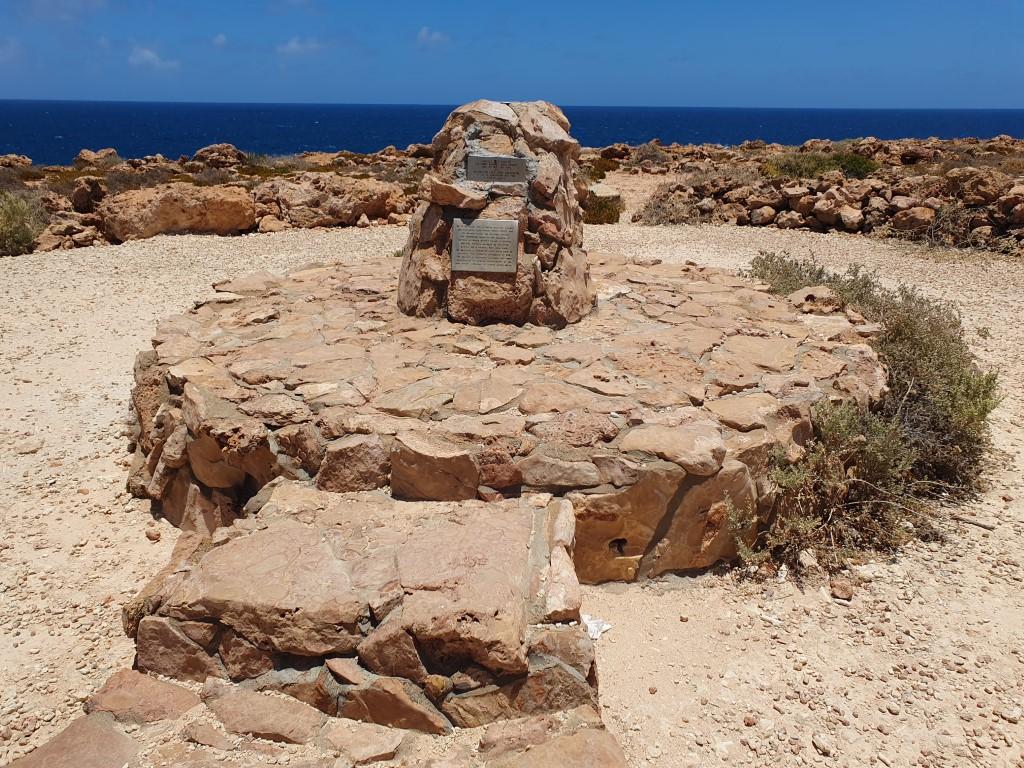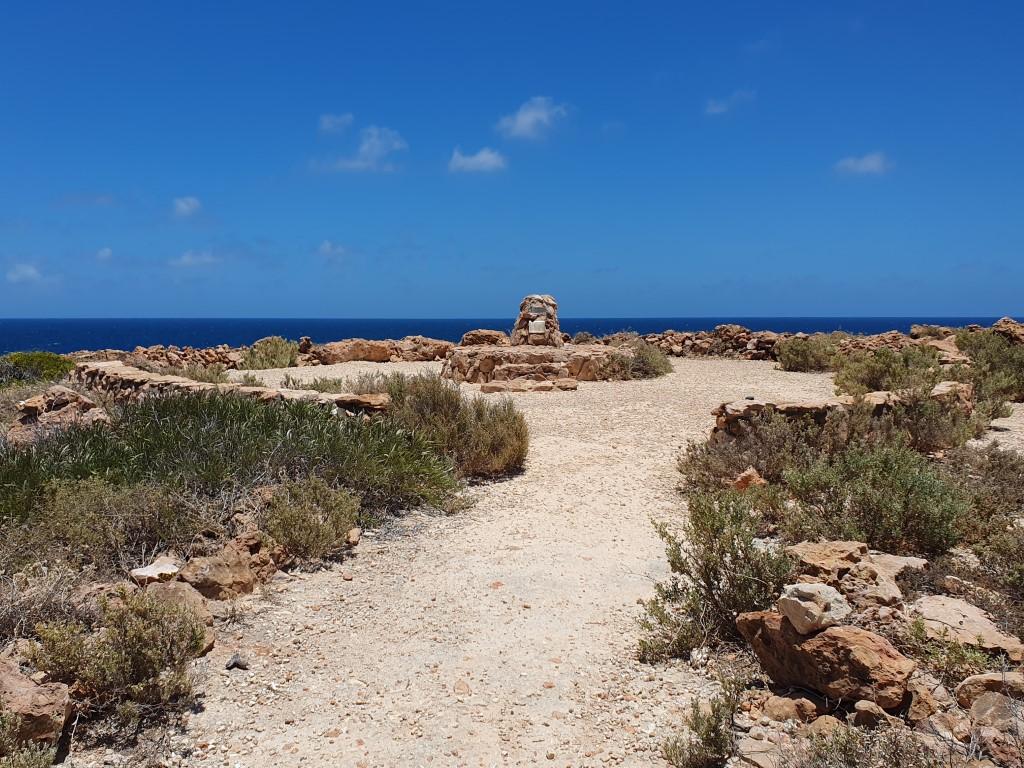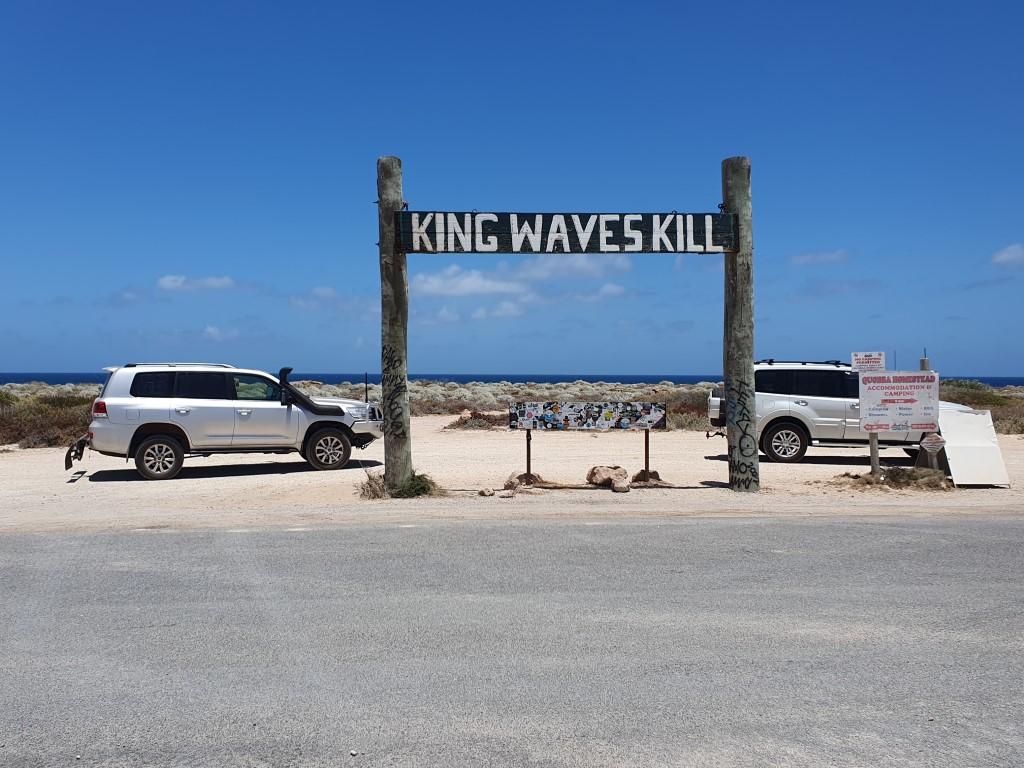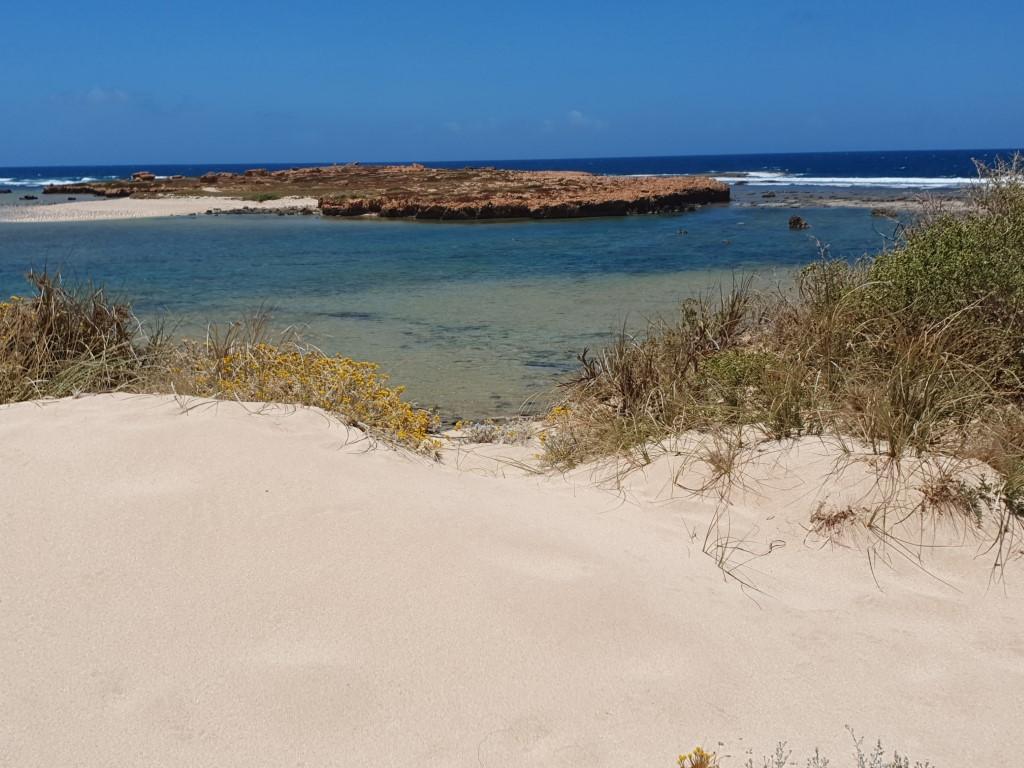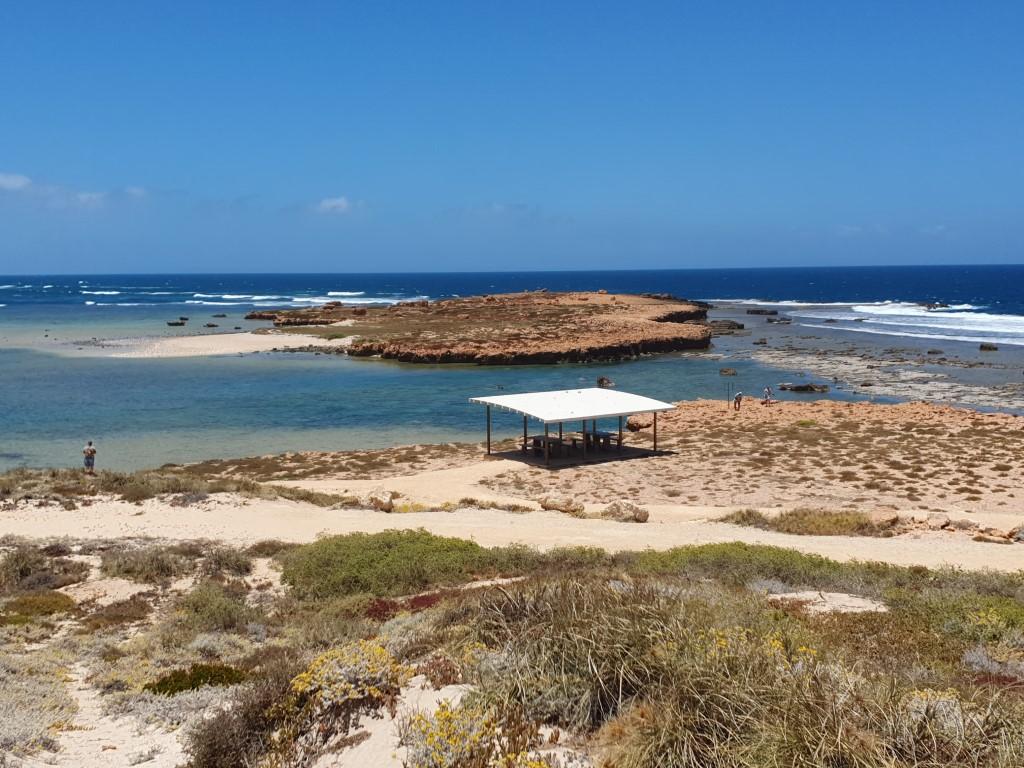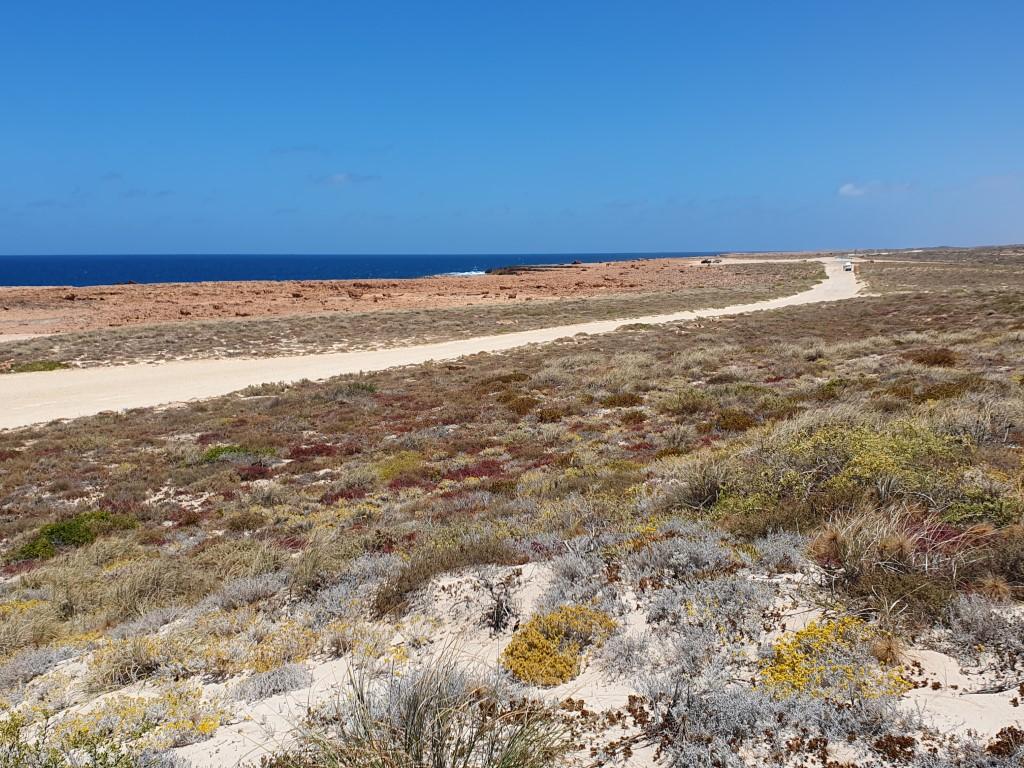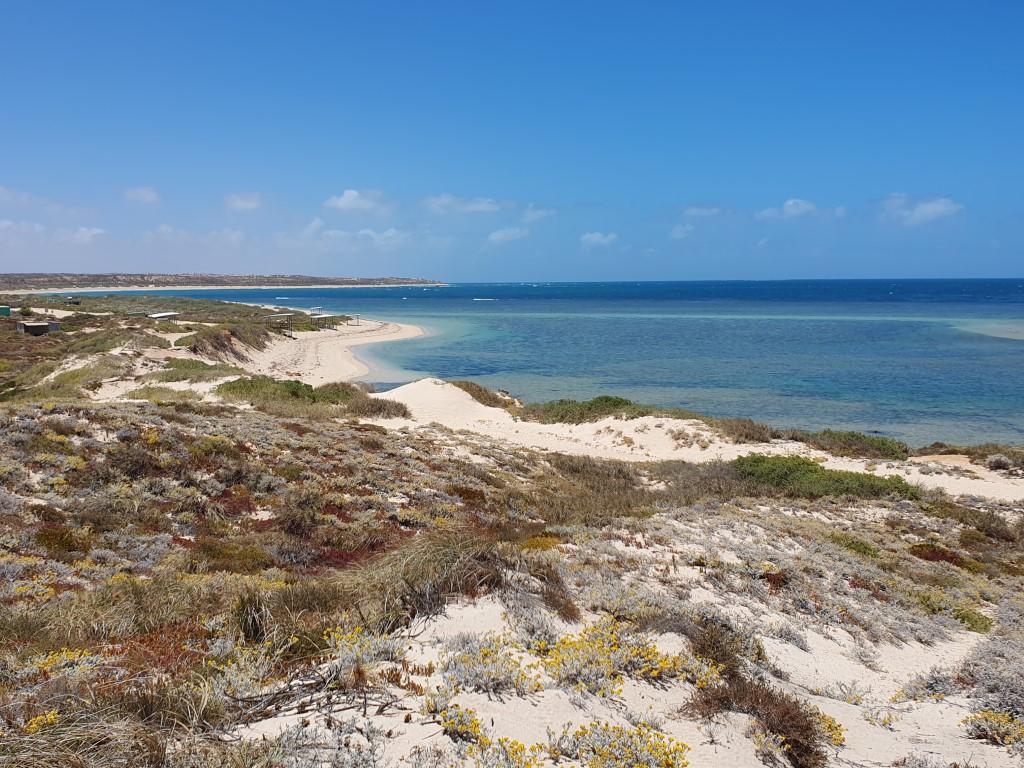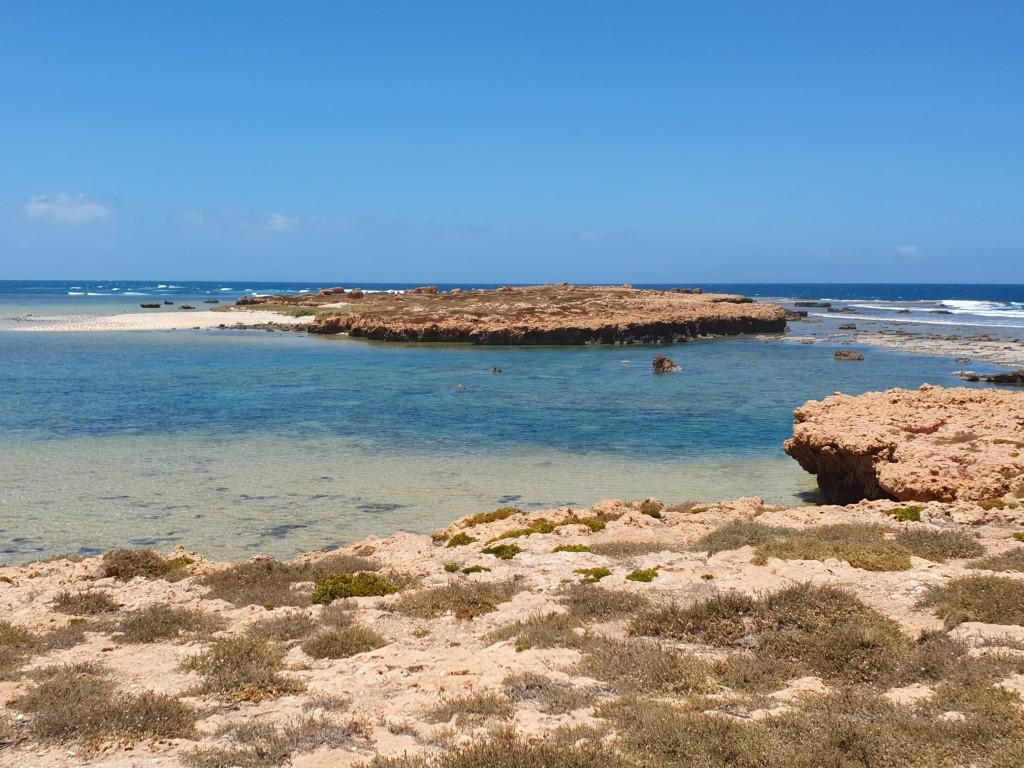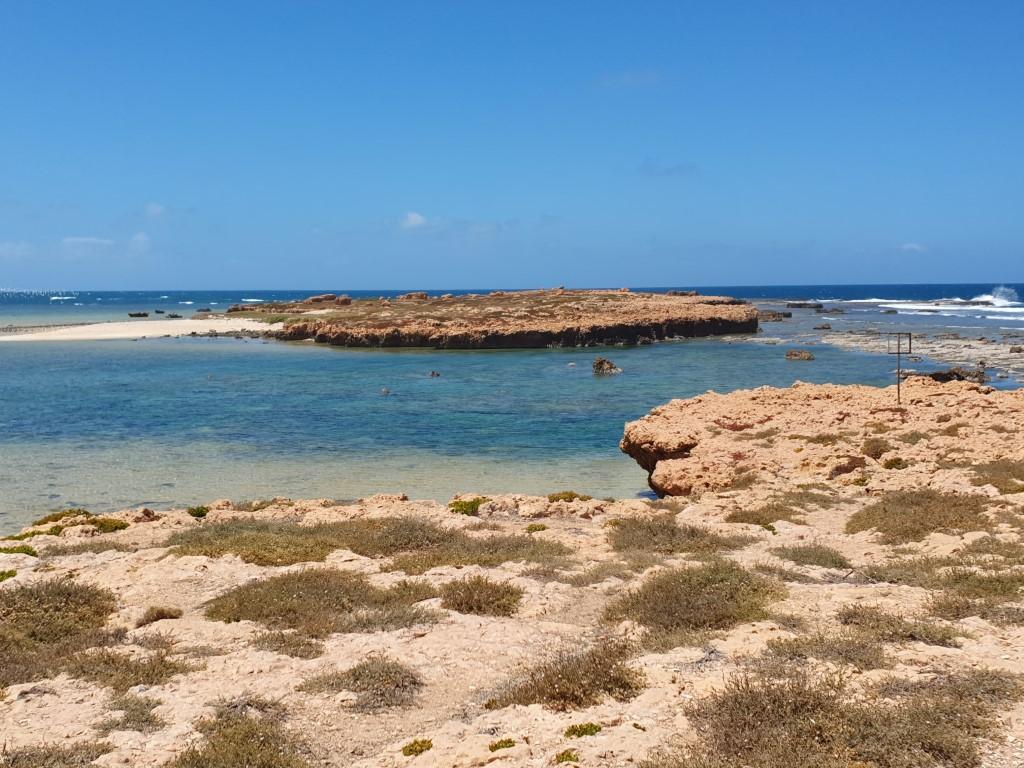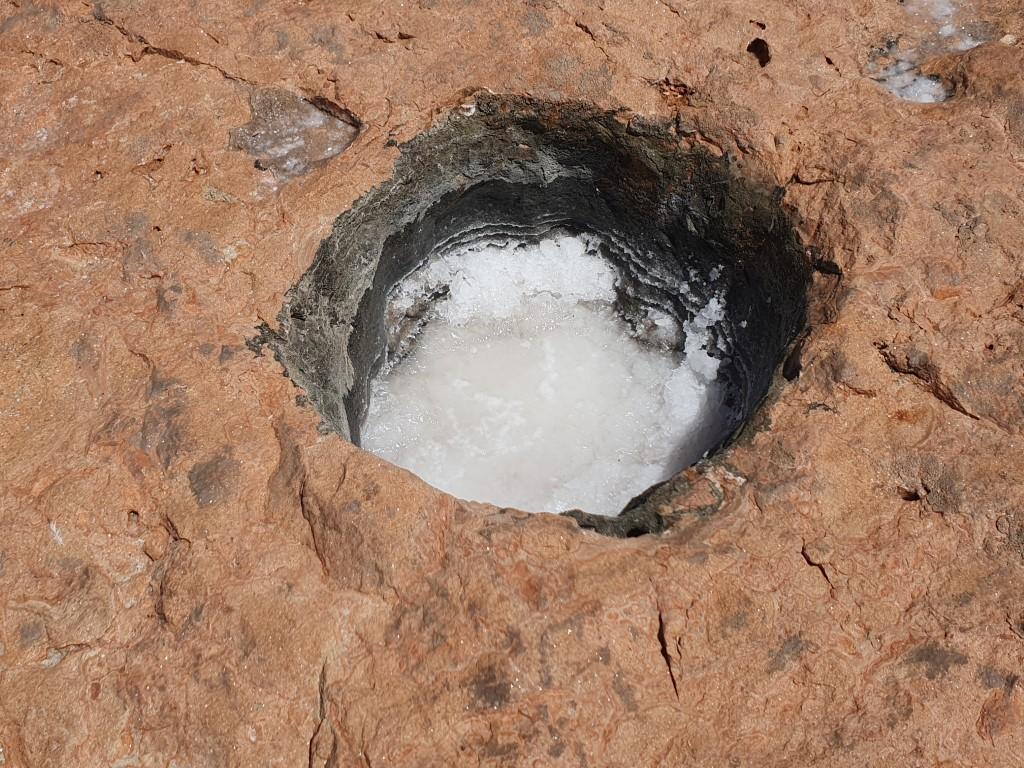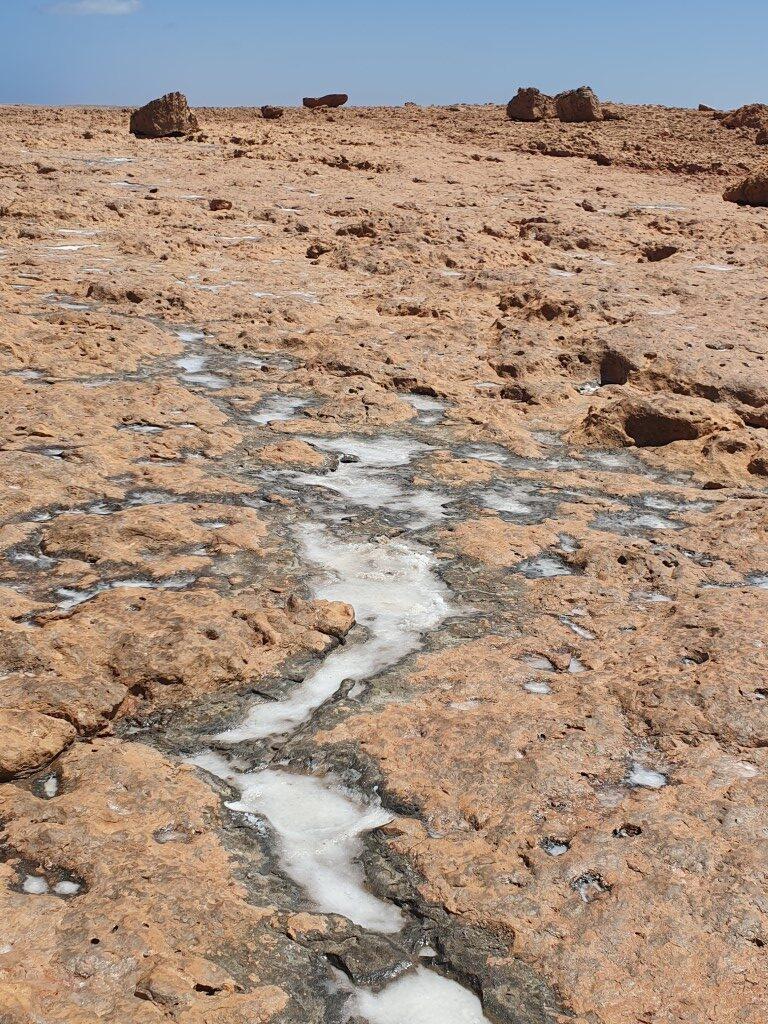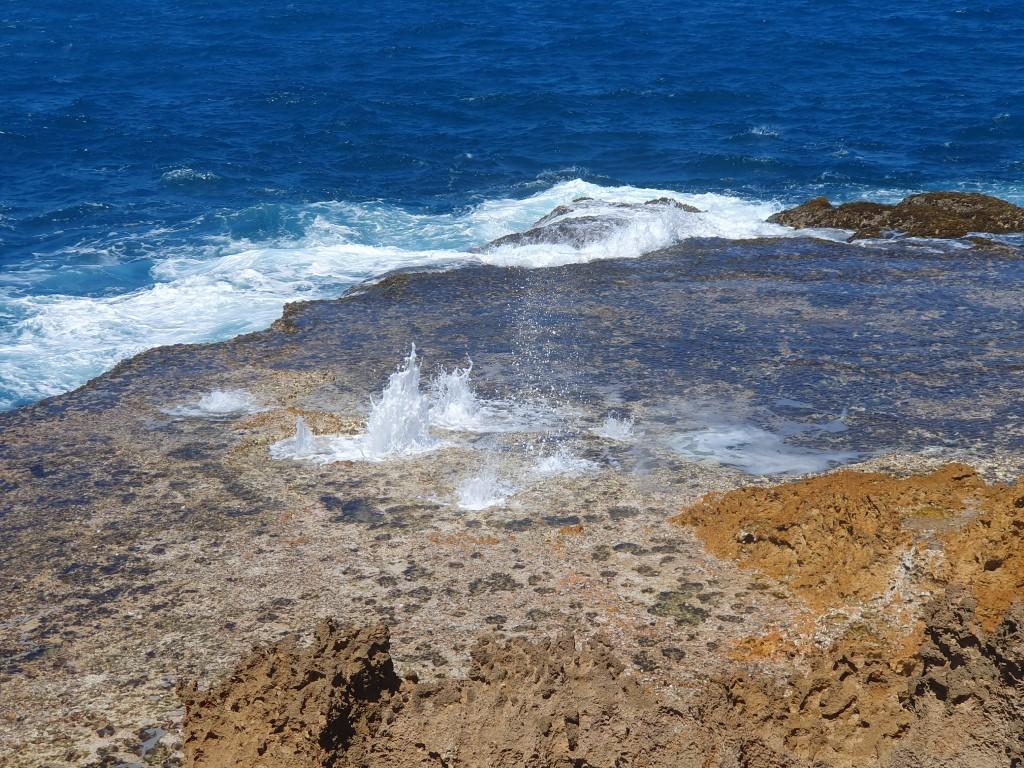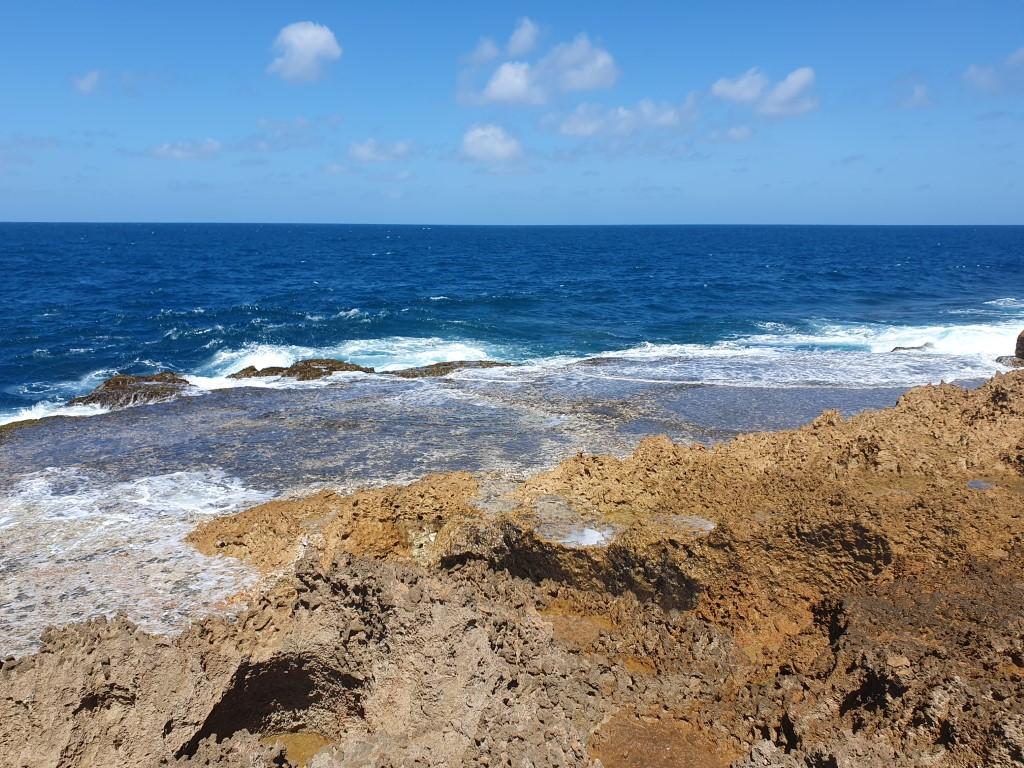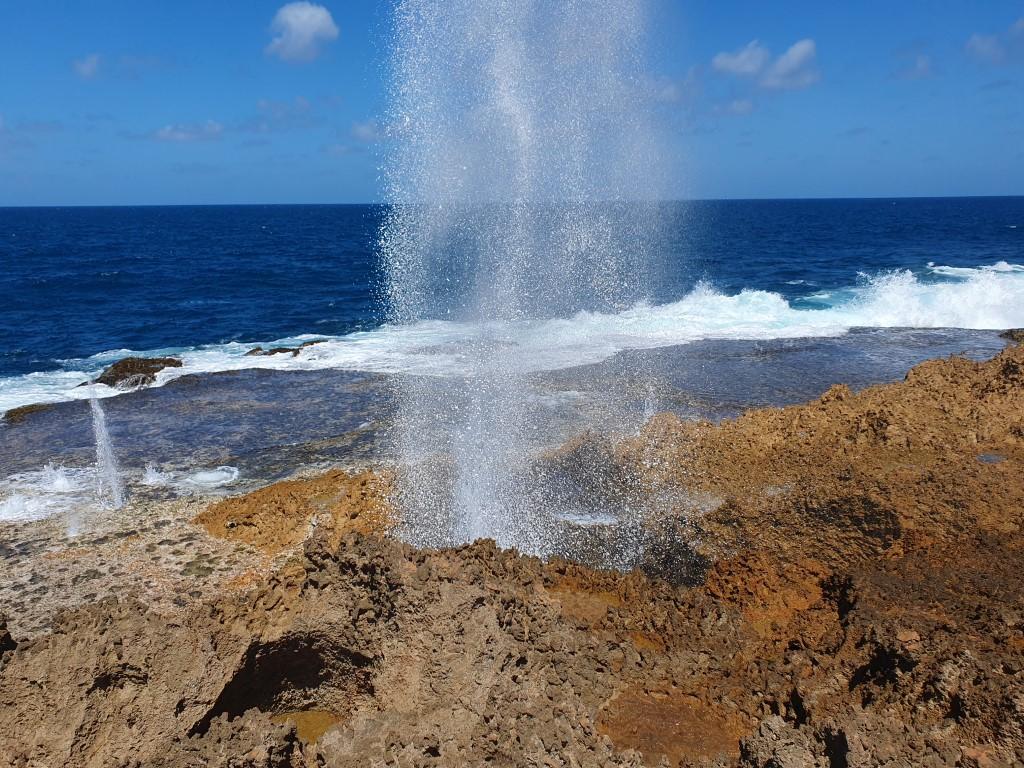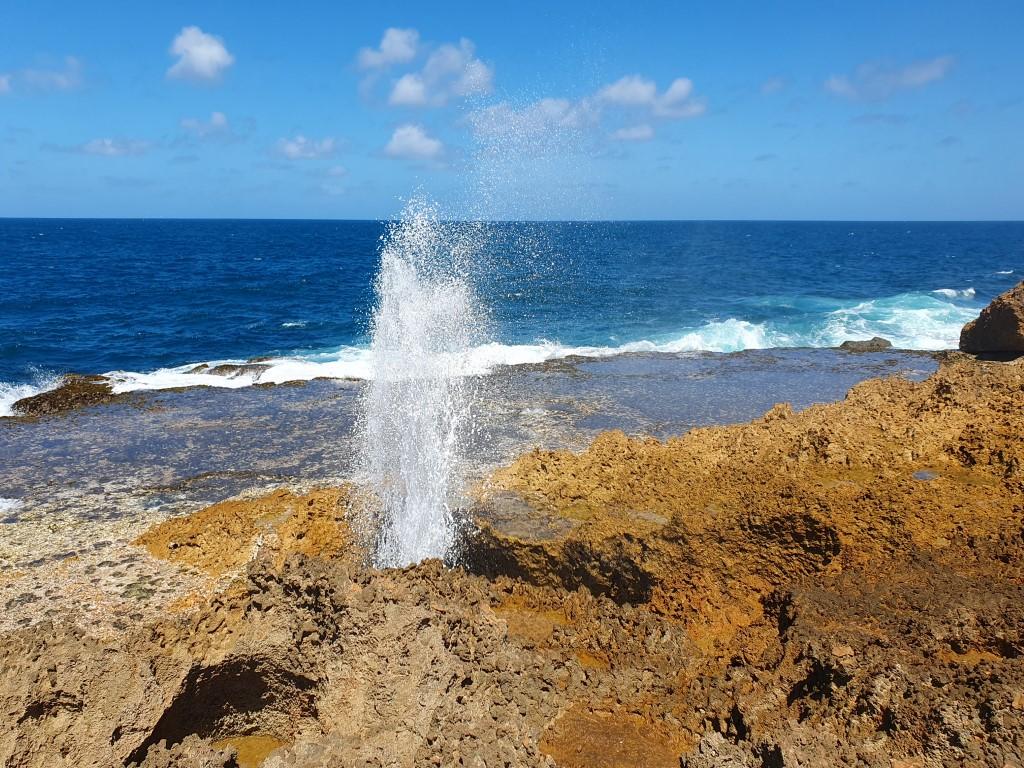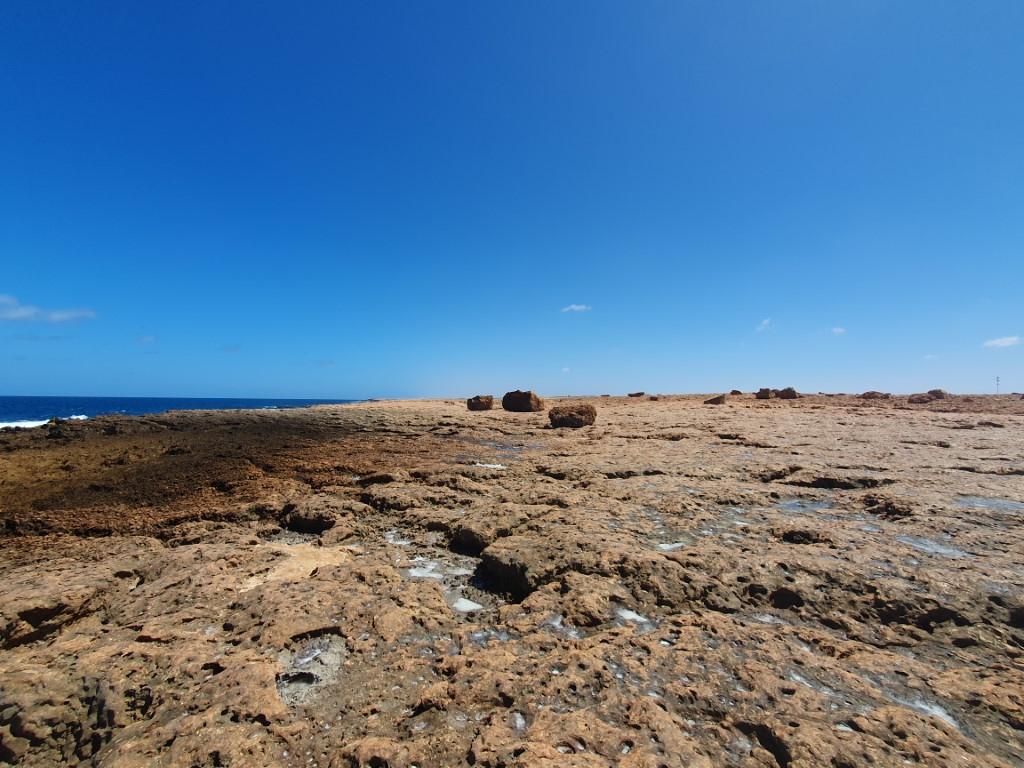So…sad to leave the beautiful Coral Bay but happy to be heading towards the larger town of Carnarvon and all that it has to offer. Carnarvon is still a tropical place and the first thing you notice as you approach the town is that there is agriculture as opposed to desert and station style grazing.

The next thing you notice is the Carnarvon Tracking Station that also houses the Carnarvon Space Museum. And then suddenly you’re coming into the town itself, which isn’t huge but certainly bigger than anything sinc Port Hedland.
The Seagull’s had pulled into Carnarvon a few days before us and were staying at a different Caravan Park a little bit out of town. We had previously booked into the Coral Coast Tourist Park, which was only a short walk from the centre of town.
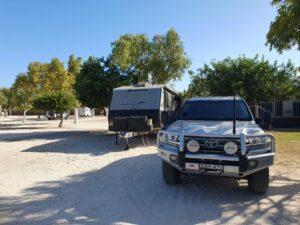
The park itself was very well presented and we had a nice sized private site with a shell grit base that is quite common in van parks on the northern W.A. coast. Despite the relaxed tropical feel the van park sent us an SMS reminder every afternoon to lock our things away at night or risk them being stolen. Carnarvon like most places still has an issue with petty crime although we never felt unsafe at any time.
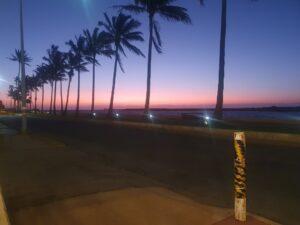
After setting up we took a drive around town and happened across the Carnarvon Hotel beautifully situated on the Carnarvon foreshore. We couldn’t help but stop in for a quick drink and whilst there we sent a photo of our drinks to the Seagulls to let them know we were in Carnarvon. They were actually heading back out of town to their van park but Jo swears she could hear the screeching brakes and squealing tires as they abruptly turned around and headed back to join us. Suffice to say we ended up having a session and dinner there. A very, very pleasant evening was had.
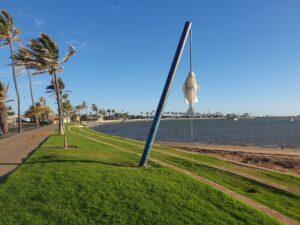
The foreshore is the jewel in Carnarvon‘s crown. The Gascoyne River empties out to the ocean and the foreshore provides both a small harbour and marina. There are a number of expensive looking houses being built there in some small man made quays. You can walk from the foreshore over a wooden footbridge to Whitlock Island, which is a nice walk and showcases the foreshore area.
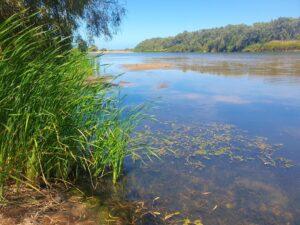
Not far from the caravan park there is an area called Chinamans Pool. It’s a nature reserve area on the Gascoyne River that is quite picturesque with reedy river banks, sand bars and overhanging trees.
There’s also a drive called the Fruit Loop just out of town that takes you past a number of plantation farms growing bananas, mangoes and all sorts of other fresh produce. Unfortunately we were out of season as none were trading and all had signs at the gate saying “No work available”.
All in all Carnarvon is another one of those remote W.A. places that punches above it’s weight but suffers from its distance from everywhere else…

The Carnarvon Space Museum is an absolute gem of a reason to visit Carnarvon. We visited with the Seagulls and had an excellent time wandering through the display and exhibits both inside and out. Situated on the site of the NASA Tracking Station it is easily visible atop a small hill with its tracking dish and standing proud amongst the scrub.

Also standing proud at the entrance is a scale replica rocket that sets the scene for what is an interesting, informative, historical and somewhat nerdy space themed museum. The museum is staffed by semi-volunteers who are travellers, like us. They sign on for three months and get to park their van on site for free and receive $100 a week to open the museum between 10:00am and 2:00pm each day. The current volunteers were in their last few days and were looking forward to the new volunteers taking over but despite this were quite cheerful and obliging.
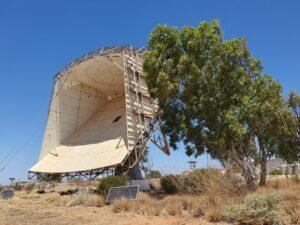
In it’s heyday the site was crucial to the NASA space program and later included an OTC Satellite Communications Centre that was ground-breaking. The first live broadcast from Australia to Great Britain was achieved here and involved a number of ABC broadcast vans piling into Carnarvon to do a highly stage-managed series of interviews with Carnarvon townsfolk including a very young Wilson ‘Ironbar’ Tuckey the mayor at that time.
Inside the museum there is an eclectic collection of exhibits mostly relating to the glory days of the space program and the space race of the 60’s/70’s. The museum is rightly proud of the fact this it was visited by Buzz Aldrin, the second man to walk on the moon, and Andy Thomas, the first Australian astronaut.

Perhaps the most interesting exhibit, at least from Rob’s perspective, is a full scale replica of the Eagle Lunar Exploration Module (LEM). When standing up close to it it looks nothing like the usual photos of it and it boggles the mind to figure out how they fit everything they did into it. Especially when you take into account that it also held the Lunar Rover in the later Moon landings… The tiny LEM is truly like Dr Who’s Tardis when it comes to internal space. It carried two men, their bulky space suits and equipment, supplies, instrumentation, landing engines and fuel, return engine and fuel, water, and so on… All in less space than we have in our caravan…Go figure!

Right in the middle of the museum they have simplified mockup of a launch capsule that you get closed into and lie on your back in the same position as an astronaut waiting for launch. You then experience a simulated launch with the attendant mission control countdown and rumbling and vibration of the engines. It’s not a true simulator but a good way understand the lift off process from the astronaut perspective.
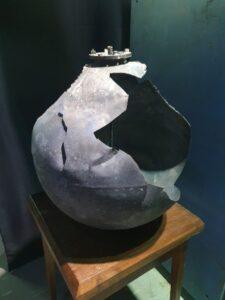
Another curio is a piece of space junk… a battered propellant tank from Skylab after it crashed in W.A. back in 1979 (can you believe it was that long ago?). The tank had some pieces cut out of it for analysis but aside from that it is as it was found after the crash.
We weren’t expecting too much from a remote space museum but it certainly did punch well above it’s weight in terms of the quality and scope of the exhibits. Very well worth the visit.

Gwoowardu Mia is an indigenous cultural centre and was just a short walk down the road from the caravan park. We met the Seagulls there and were disappointed to find it closed so we trapsed off into town for a coffee.
The Information Centre tolad us that it should have been open and kindly rang them for us. It seems they were a bit late getting started that day so we set off again to find it open. And we were glad it was.

We were greeted by a charming young indigenous women who could not have done more to brighten our day. She told us a great deal about the centre and about the local burrowing bees in particular. It seems that her mother-in-law is a local artist and collects all the dead bees during the season and turns them into jewellry and such. She also explained how they were a staple food for elders during the season and that they still go and dig some of the burrows up each year as a delicacy.
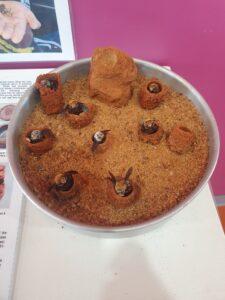
The bees build mud burrows in the clay soil and deposit one larvae in each cell with a small amount of honey to feed them. Indigenous people carefully dig up the cells, like little clay pots and roast the larvae. Our indigenous host says they taste like buttery honey and are delicious. She was especially proud of a burrowing bee display that her six year old had made, which really was very good, and had pride of place in the reception area of the centre.
After learning all about burrowing bees we went through the display area of the centre, which told a full and comprehensive story of the indegenous people of the Carnarvon and Gascoyne region. It was told warts and all, which included stories of great misery and suffering and the hands of colonial setllement but also told of some who actually benefitted from the British invasion.
Unfortunately photos were not permitted but the displays were very well presented and quite innovative. One such was a large back-lit table that had dozens and dozens of small circular pictures floating randomly around the table. When you touched a circle it would stop and all of the related circles would come in and stick close to the circle you touched. You could then read about that circle and/or choose one of the related circles to explore further. After time the related circles would start drifting apart again and re-start their randon journeys. Fascinating…
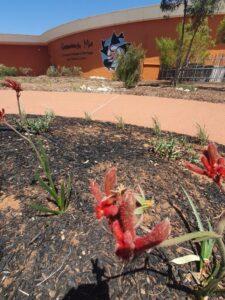
The Centre also had a garden area at the back, which was used for local indigenous ceremonies and also operated as a wedding venue. Hats off to Gwoowardu Mia cultural centre. One of the best indigenous initiatives that we’ve come across… fascinating, innovative, honest and welcoming…
The Seagulls suggested we do a day trip out to Gascoyne Junction, a small town 175km inland from Carnarvon. It was named for its location at the junction of the Gascoyne and Lyons Rivers. The drive out was long but the road was excellent and the Seagulls were excellent company as usual.

We were a little intrigued when we arrived to discover a very clean, tidy town that looked like it had just been built, which in fact was not far from the truth. The town was evacuated after massive flooding in 2010 that destroyed the pub. Much of the town was rebuilt following that event. It was hard to imagine how it could have been so flooded given the flatness of the town and the width of the dry river bed and the arid red soil.
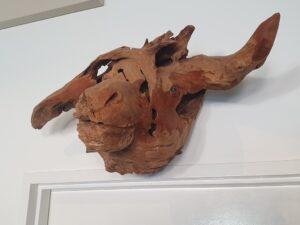
The pub/fuel station/store was immaculate despite feeling a bit empty and quiet and had a quirky wooden sculpture of a buffalo head mounted above a door. The town itself was almost like a ghost town with nobody on the street other than our group of four. We wandered over to the Shire Office, which was also home to the Information Centre and a small museum only to discover that the offices were closed because all the staff were ‘on training’ that week. After that we returned to the pub and settled in for a very good pub lunch.
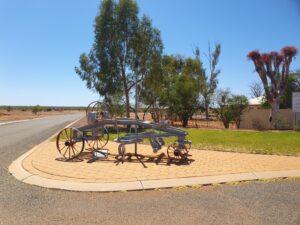
With full tummies and a couple of drinks we headed back over to the small museum at the Shire Offices, which is always open. It was a well done display of implements and artefacts from the early days of the town. There were also a number of old farming implements outside the museum including a very interesting old grader that looked as though it may have been horse-drawn.
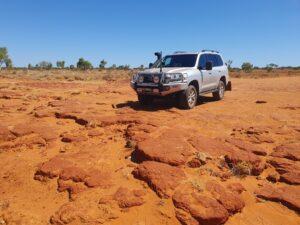
After taking in every thing we could at Gascoyne Junction we returned to the cruiser for the drive back to Carnarvon. Before arriving back we stopped in at Rocky Pool, 55km from Carnarvon. Rocky Pool is a semi-permanent water hole that is actually part of the river that is deeper and takes much longer to evaporate.

It still had a lot of water and appeared quite deep in places. The striking feature of the area were the rocky banks and plateau area that were a magnificent burgundy red/brown in colour. We all agreed that it was an exceptionally beautiful place and well worth the visit, which also served to break up the long return drive home.
All in all it was a good day out enjoyed by all and gave us all a great appreciation of the remoteness of places like Carnarvon and Gascoyne Junction as well as the sheer immensity of Western Australia. We were really only about halfway down the coastline on our journey towards Perth…
Our last outing in Carnarvon was a day trip north to Quobba Station, which is an operating sheep station that also has a basic caravan and camp ground that is mainly used by hard-core fishermen and campers. The drive in was over a decent stretch of corrugated dirt road. The Seagulls took their Pajero instead of coming with us because they intended to push further on to Red Bluff after we stopped for lunch at the station camp ground.
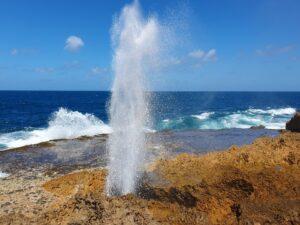
Our first stop of the trip was the Quobba Blowholes… that’s ‘blowholes’ plural. The Quobba Blowholes are located on a large flat rock ledge facing the full force of the Indian Ocean. They are at their best at mid-tide when the water level is just below the ledge. As the waves roll in they slowly fill the caves below the ledge and build up pressure until they finally burst through the surface vents in a series of small bubblers with a large central blowhole that vents 4 or 5 metres high. The main blowhole is spectacular as the spray pushes upwards with the characteristic ‘choof’ sound as air and water are blasted out together.
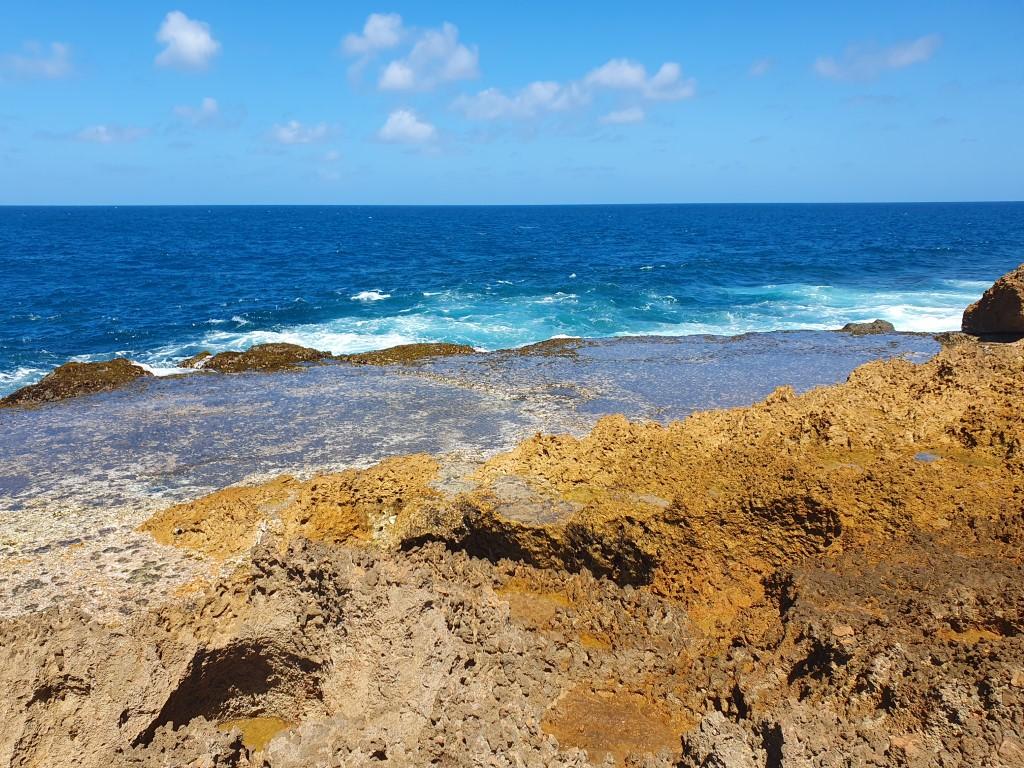
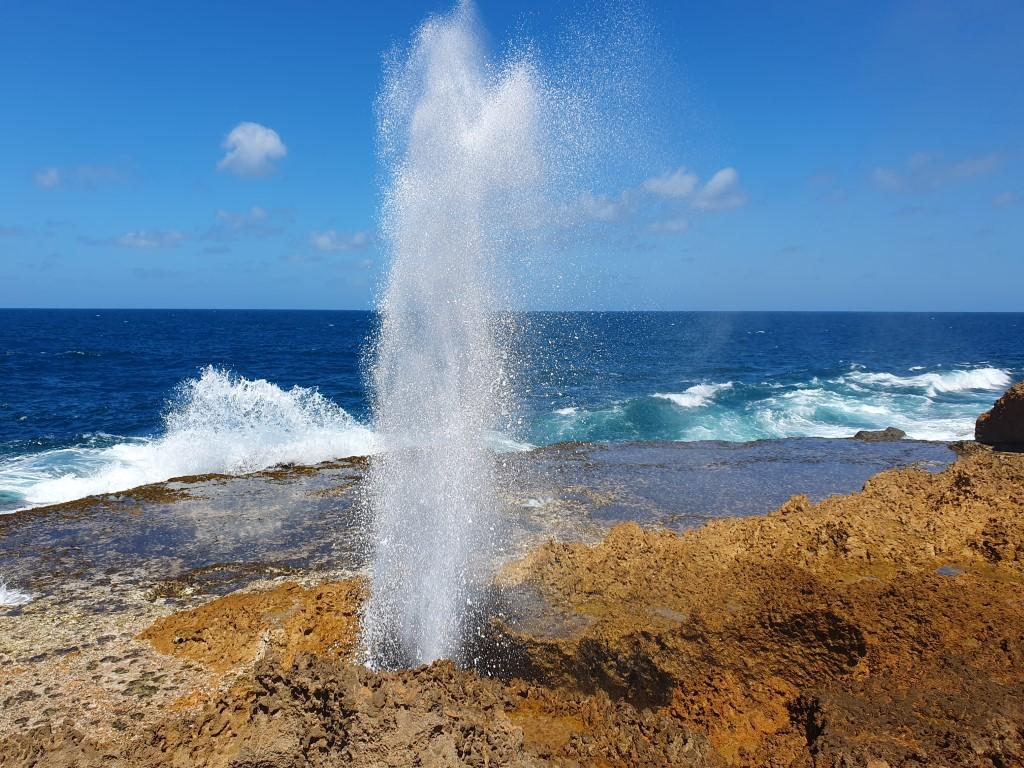
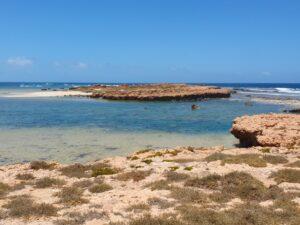
After being mesmerised by the blowhole(s) we headed to the Point Quobba for a quick cup of tea and to take in the coastline around one of the free camp areas. It was a beautiful spot with crystal clear water and a small island with hundreds of terns milling around on the island’s beach.
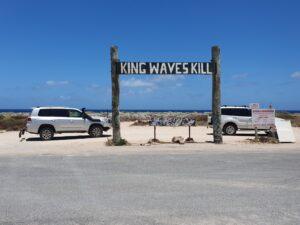
We also stopped by the famous ‘King Waves Kill’ sign for a photo op with our Cruiser and the Seagull’s Pajero. Apart from being a serious warning it is also a magnificent piece of coastline with a large flat rocky ledge meeting the ocean.
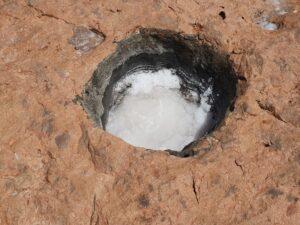
One very unusual feature of the rock ledge is a series of small pot holes and fractures in the rock that contain pure white salt. A testament to the salinity of the Indian Ocean, the salt water is trapped in the hole and fractures and then evaporated in the intense sun leaving deposits of pure white salt in stark contrast to the earthy basaltic rock.

As you approach Quobba Station you come to the HMAS Sydney II Memorial Cairn. This is the closest point on land to where the HMAS Sydney II engaged in a ferocious sea battle with the German raider ‘Kormoran’ disguised as a Dutch Trading Ship. Tragically all the sailors on HMAS Sydney II were lost (600+) whilst 200+ German Sailors made it ashore but abruptly surrendered when they learned how relote and desolate was the place that they landed. It was the worst Australian naval tragedy of WWII and is remembered and comemorated greatly in Western Australia.
We drove up the final stretch to Quobba Station to find that it was mostly closed for the season and just operating as a campground and sheep station. The manager told us first-hand of the difficulties of running the station but seemed upbeat about the future. The fishing around Quobba Station seemed phenomenal based on the photos in the office with some magnificent specimens having been landed off the rock ledge.
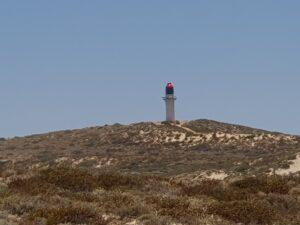
At Quobba Station the Seagulls continued on their way to Red Bluff whilst we headed back to Carnarvon having had enough of the rough and rutted drive to get there. On the way we stopped to get a closer look at Quobba Lighthouse, which stands by itself atop a high hill with a bright red dome above the light and the white tower below. It’s quite a stark and lonely sight and would have been a very lonely place in it’s day.
It was yet another great day out with the Seagulls in a particularly stark and beautiful part of the Western Australian coast…

